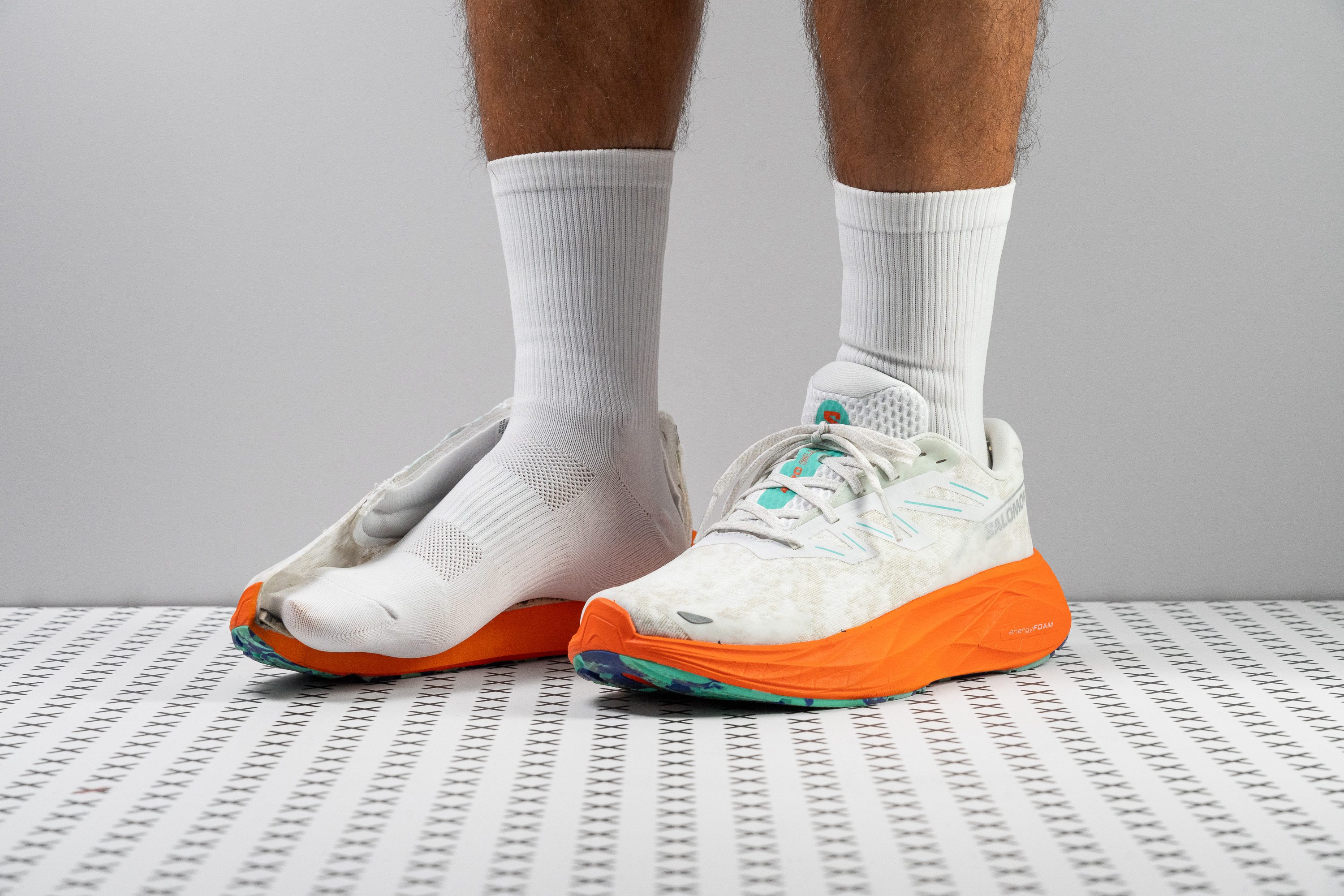Our verdict
Pros
- 360-degree reflectivity
- Lightweight for its size
- Enhanced upper
- Superbly stable
- Ideal for heel strikers
- Well-protected outsole
- Masters daily mileage with ease
- Great for winter too!
Cons
- Excessively rigid
- Still lacks a gusseted tongue
- Lower-than-expected stack height
- Midsole feels flat
Audience verdict
- Top 2% in road running shoes
- Top 4% in Salomon running shoes
Comparison
The most similar running shoes compared
+ + Add a shoe | |||||
|---|---|---|---|---|---|
| Audience score | 93 Superb! | 91 Superb! | 92 Superb! | 90 Superb! | |
| Price | $160 | $180 | $160 | $180 | |
| Pace | Daily running | Daily running | Daily running | Daily running | |
| Shock absorption | Moderate | High | High | High | |
| Energy return | Low | Moderate | High | Moderate | |
| Traction | High | High | High | High | |
| Arch support | Neutral | Neutral | Neutral | Neutral | |
| Weight lab Weight brand | 9.5 oz / 268g 9.2 oz / 260g | 10.3 oz / 291g 10.3 oz / 292g | 8.7 oz / 248g 8.6 oz / 245g | 9.6 oz / 272g 9.7 oz / 275g | |
| Lightweight | ✗ | ✗ | ✓ | ✗ | |
| Drop lab Drop brand | 11.3 mm 10.0 mm | 9.6 mm 8.0 mm | 10.3 mm 8.0 mm | 9.4 mm 6.0 mm | |
| Strike pattern | Heel | HeelMid/forefoot | Heel | HeelMid/forefoot | |
| Size | True to size | True to size | Slightly large | True to size | |
| Midsole softness | Balanced | Soft | Balanced | Balanced | |
| Difference in midsole softness in cold | Small | Big | Small | Small | |
| Toebox durability | Good | Decent | Bad | Decent | |
| Heel padding durability | Decent | Decent | Decent | Bad | |
| Outsole durability | Decent | Decent | Decent | Good | |
| Breathability | Moderate | Moderate | Moderate | Moderate | |
| Width / fit | Medium | Medium | Narrow | Medium | |
| Toebox width | Medium | Medium | Narrow | Medium | |
| Stiffness | Moderate | Stiff | Moderate | Stiff | |
| Torsional rigidity | Stiff | Stiff | Stiff | Stiff | |
| Heel counter stiffness | Moderate | Moderate | Flexible | Moderate | |
| Rocker | ✓ | ✓ | ✗ | ✓ | |
| Heel lab Heel brand | 35.5 mm 41.0 mm | 42.9 mm 47.0 mm | 42.2 mm 40.0 mm | 39.9 mm 37.0 mm | |
| Forefoot lab Forefoot brand | 24.2 mm 31.0 mm | 33.3 mm 39.0 mm | 31.9 mm 32.0 mm | 30.5 mm 31.0 mm | |
| Widths available | Normal | Normal | Normal | Normal | |
| Orthotic friendly | ✓ | ✓ | ✓ | ✓ | |
| Season | All seasons | All seasons | All seasons | All seasons | |
| Removable insole | ✓ | ✓ | ✓ | ✓ | |
| Ranking | #10 Top 2% | #32 Top 9% | #10 Top 3% | #40 Top 11% | |
| Popularity | #511 Bottom 23% | #136 Top 37% | #102 Top 28% | #203 Bottom 45% |
Who should buy
After extensive testing in our lab and on the road, we're excited to confirm that the Salomon Aero Glide 2 is:
- An exceptional upgrade for fans of the original, enhancing the upper while maintaining the same versatility.
- An ideal daily trainer for those who prefer a high heel-to-toe drop, providing rearfoot strikers with the support they need.
- A perfect road companion for enthusiasts of Salomon’s trail shoes, offering a seamless and stable transition to road running.
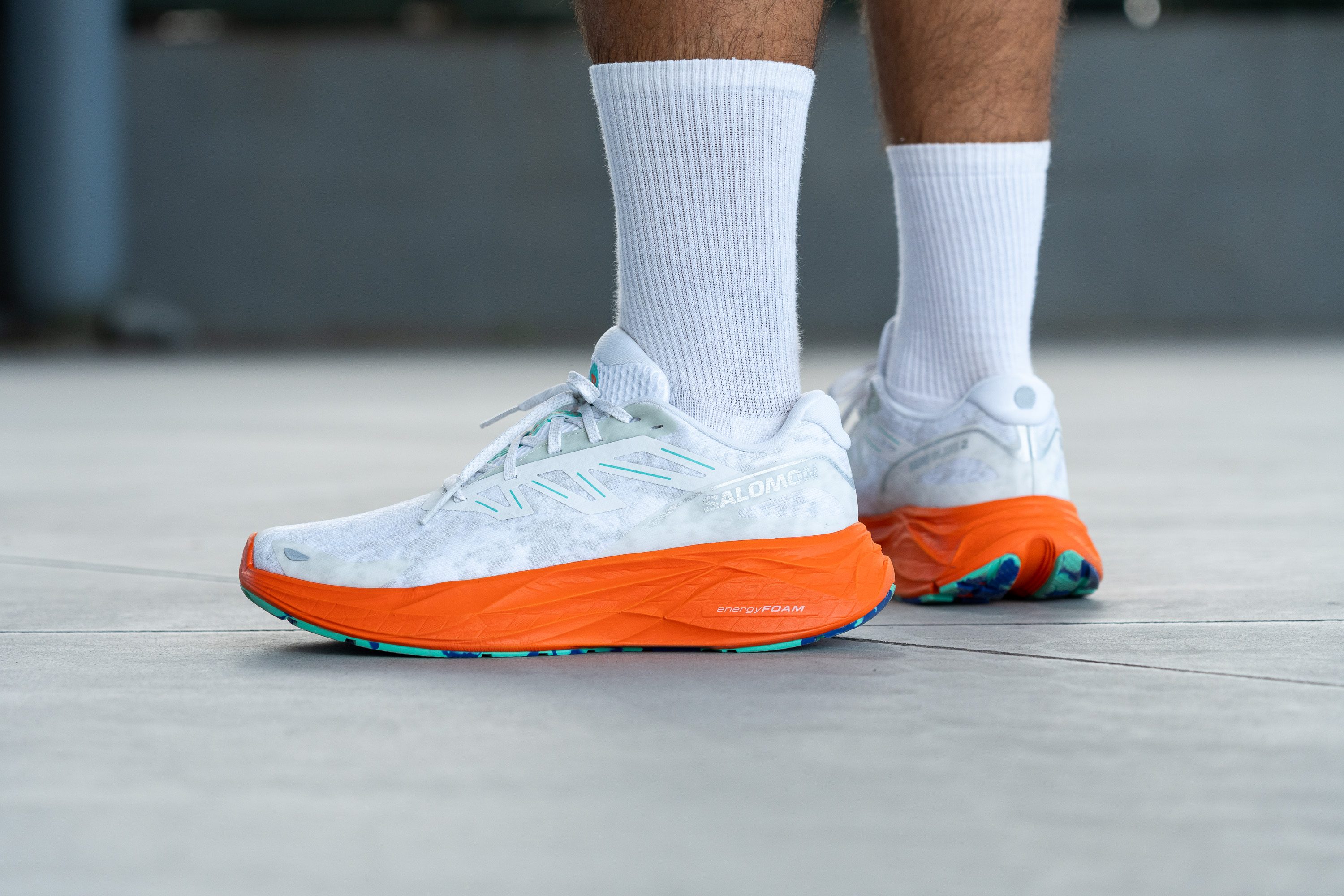
Who should NOT buy
We think the Aero Glide 2 falls short for runners seeking flexibility in a daily trainer. Its rigid build makes it really difficult to twist. In our experience, this might not be ideal for your daily runs if you're after a natural ride. Get the Brooks Ghost 16 or the Altra Experience Flow instead.
Additionally, we believe this model isn't the best choice for forefoot and midfoot strikers, as its high 11.3 mm drop doesn't cater to those running styles. If you're looking for a low-drop shoe, we recommend the ASICS Noosa Tri 16 or the New Balance Fresh Foam More v5 instead.
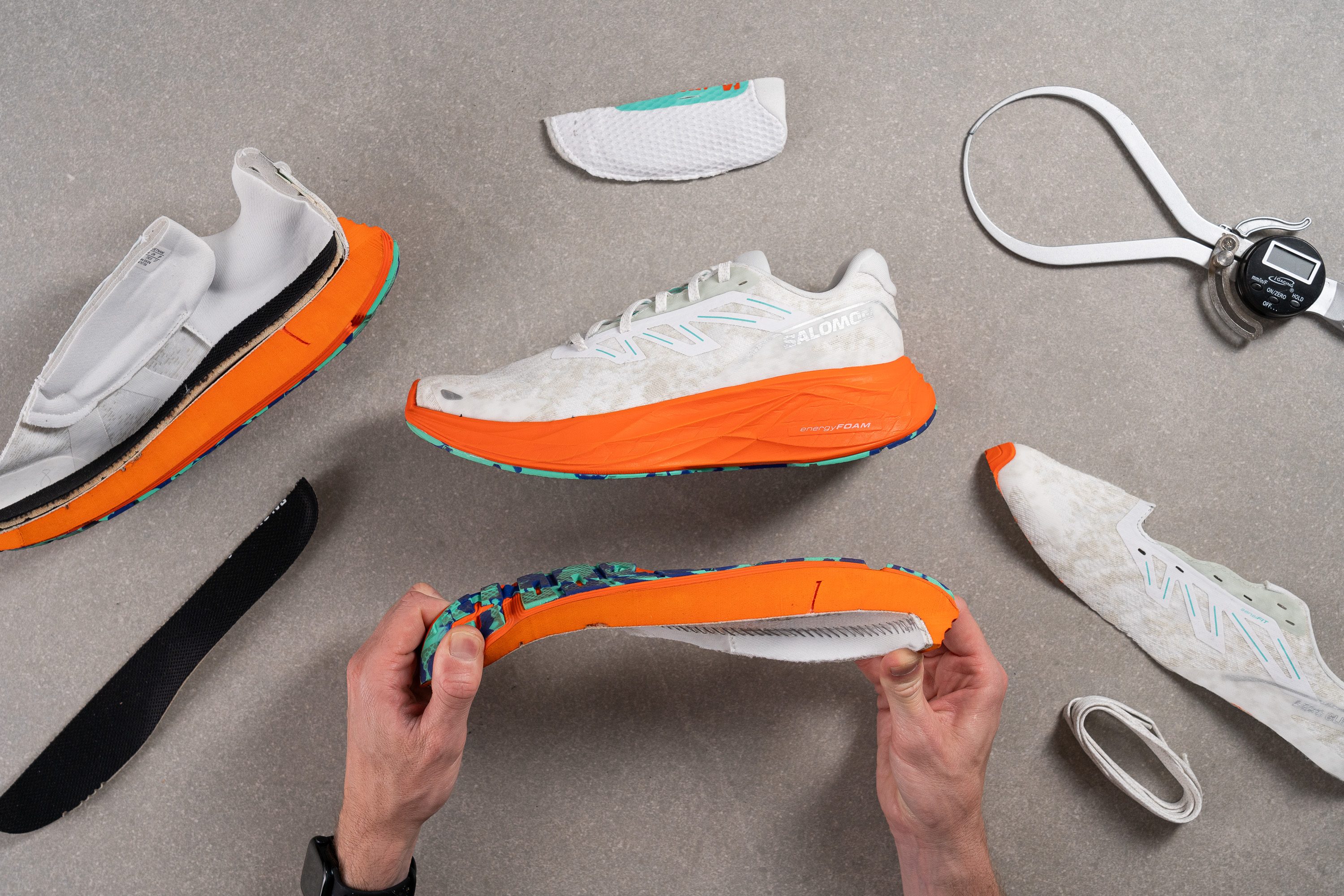
Cushioning
Shock absorption
The Aero Glide 2 features oversized midsole sidewalls that might suggest a plush ride at first glance, but our ASTM F1976 test told a different story.
We measured 118 SA in the heel and just 92 SA in the forefoot. Both are numbers that place it far from ultra-cushioned territory, showcasing that it’s a better match for shorter runs or lighter runners.
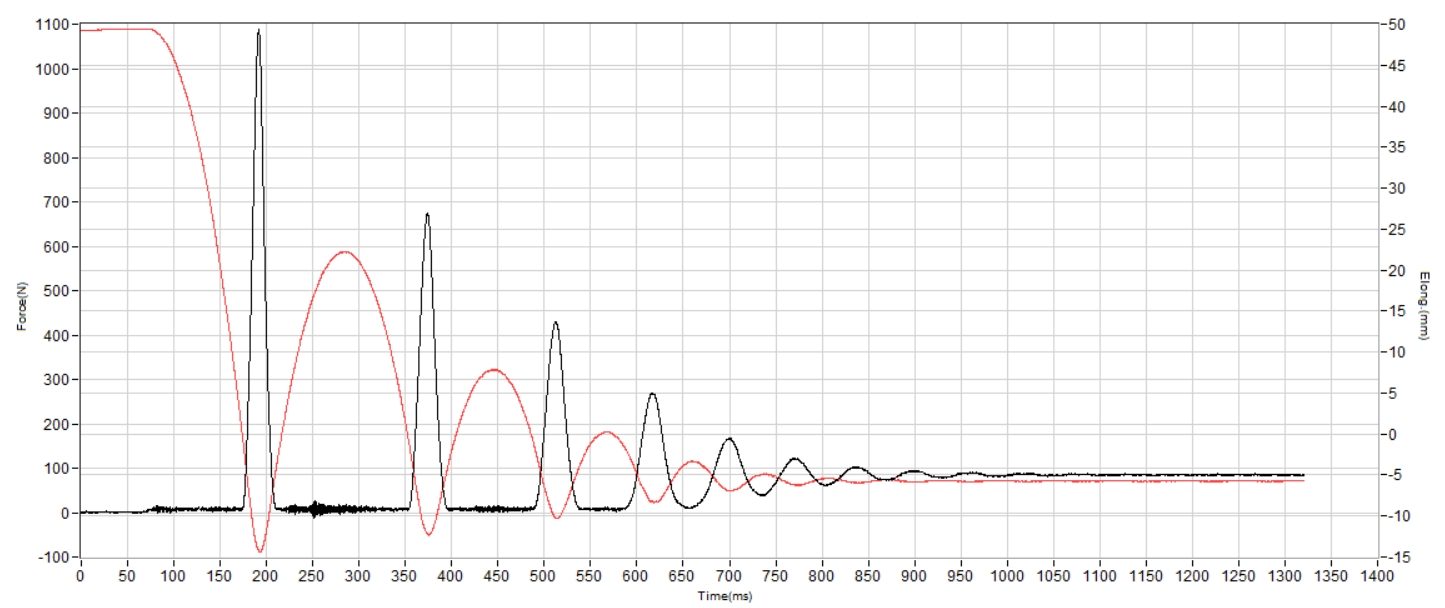
| Aero Glide 2 | 118 SA |
| Average | 129 SA |
Energy return
Energy return fell slightly below our expectations, with the Aero Glide 2 reaching just 50.7%. But in the lab, this didn’t come as a surprise—Salomon’s Energy Foam is an EVA + OBC blend, similar to ASICS’ FF Blast+, and it usually lands around the 50% mark too.
| Aero Glide 2 | 50.7% |
| Average | 58.5% |
Heel stack
Salomon advertises a 41 mm stack height in the heel for this model, but our measurements show a significant discrepancy, finding only 35.5 mm.
Despite this, we think that most heel strikers will find the 35.5 mm sufficient for both daily and extended runs—offering ample cushioning for long distances.
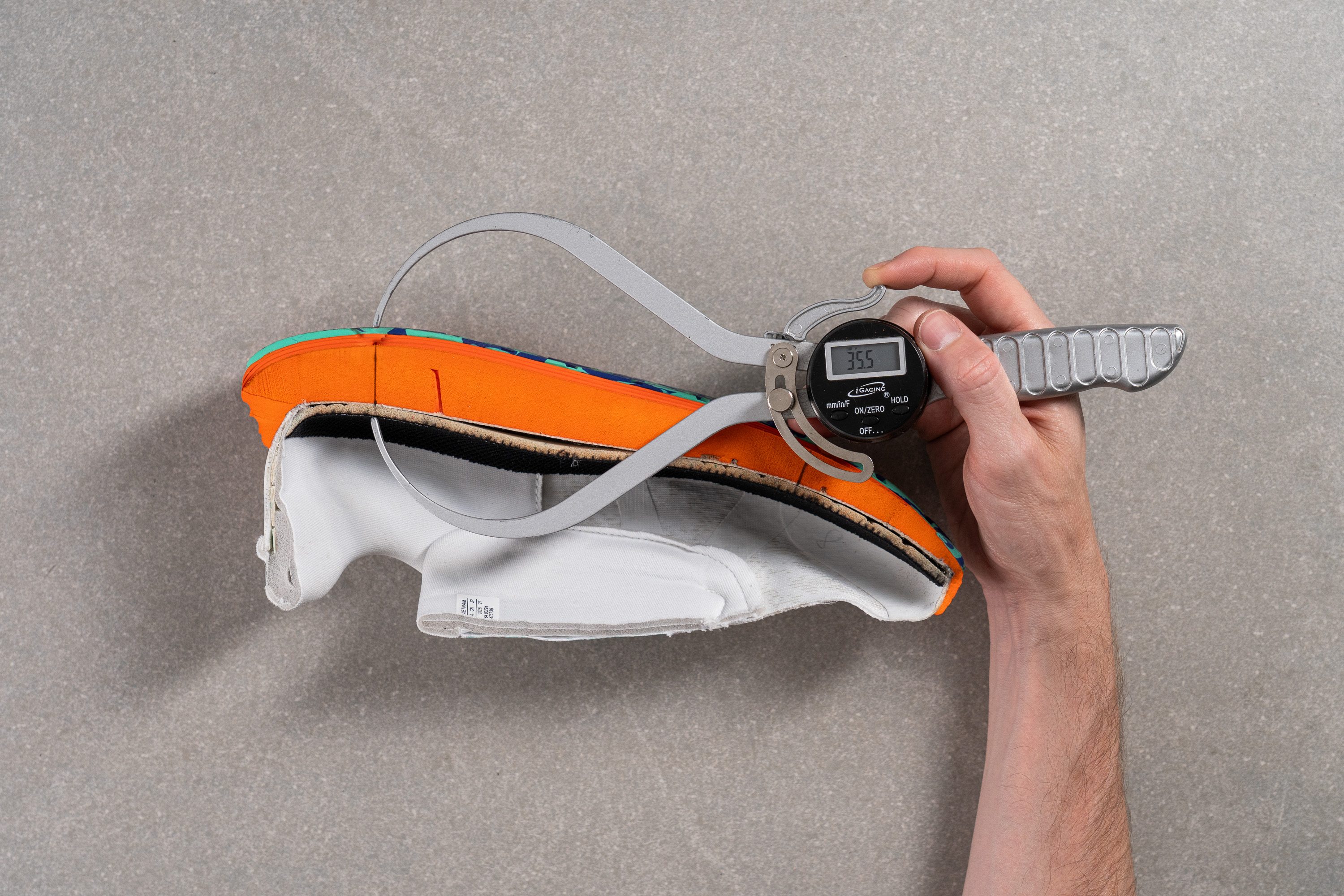
| Aero Glide 2 | 35.5 mm |
| Average | 34.8 mm |
Forefoot stack
The forefoot's stack height measured slightly lower than expected at 24.2 mm, as verified by our digital calipers.
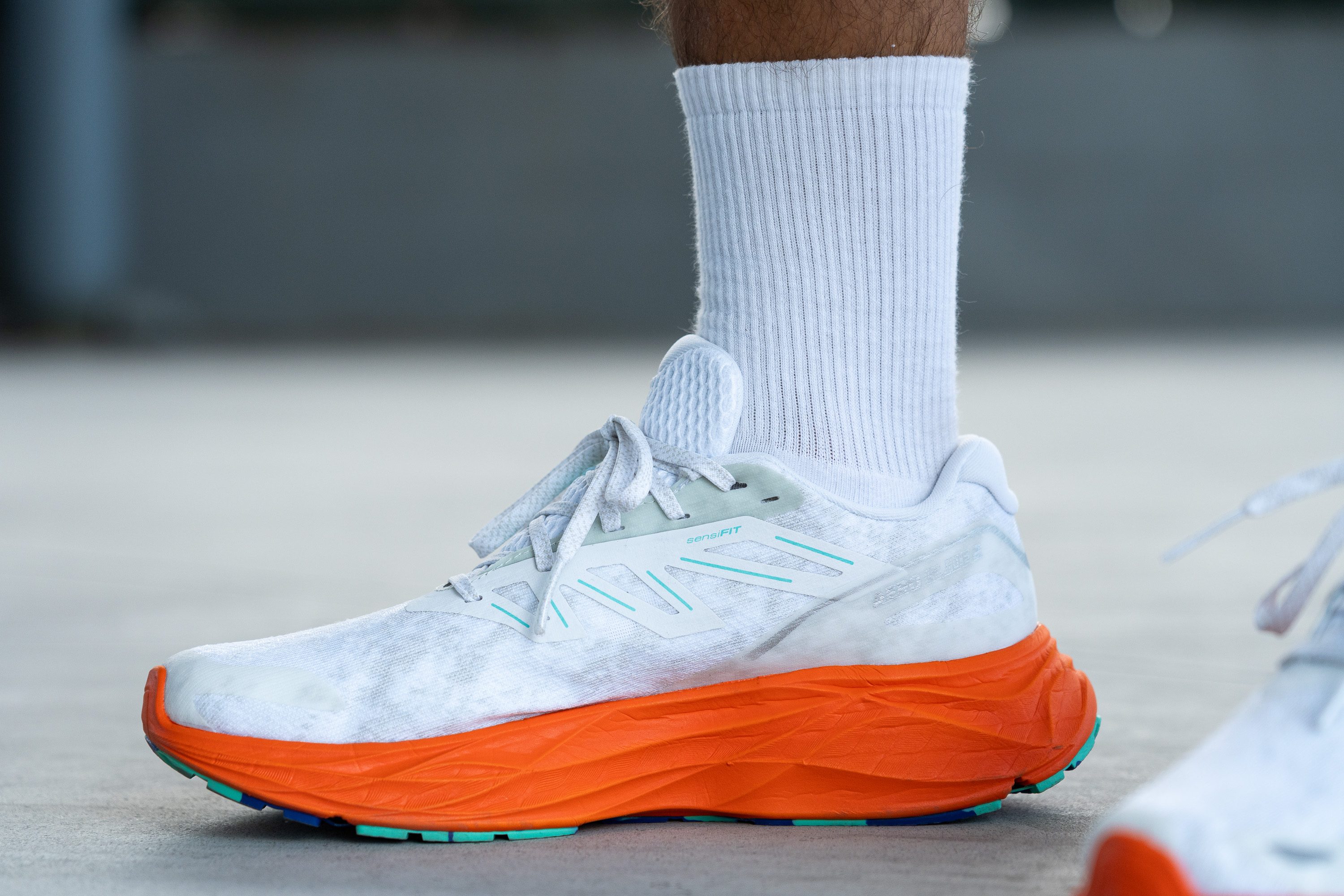
Although this measurement is lower than average, it didn’t come as a surprise since it aligns precisely with the previous version.
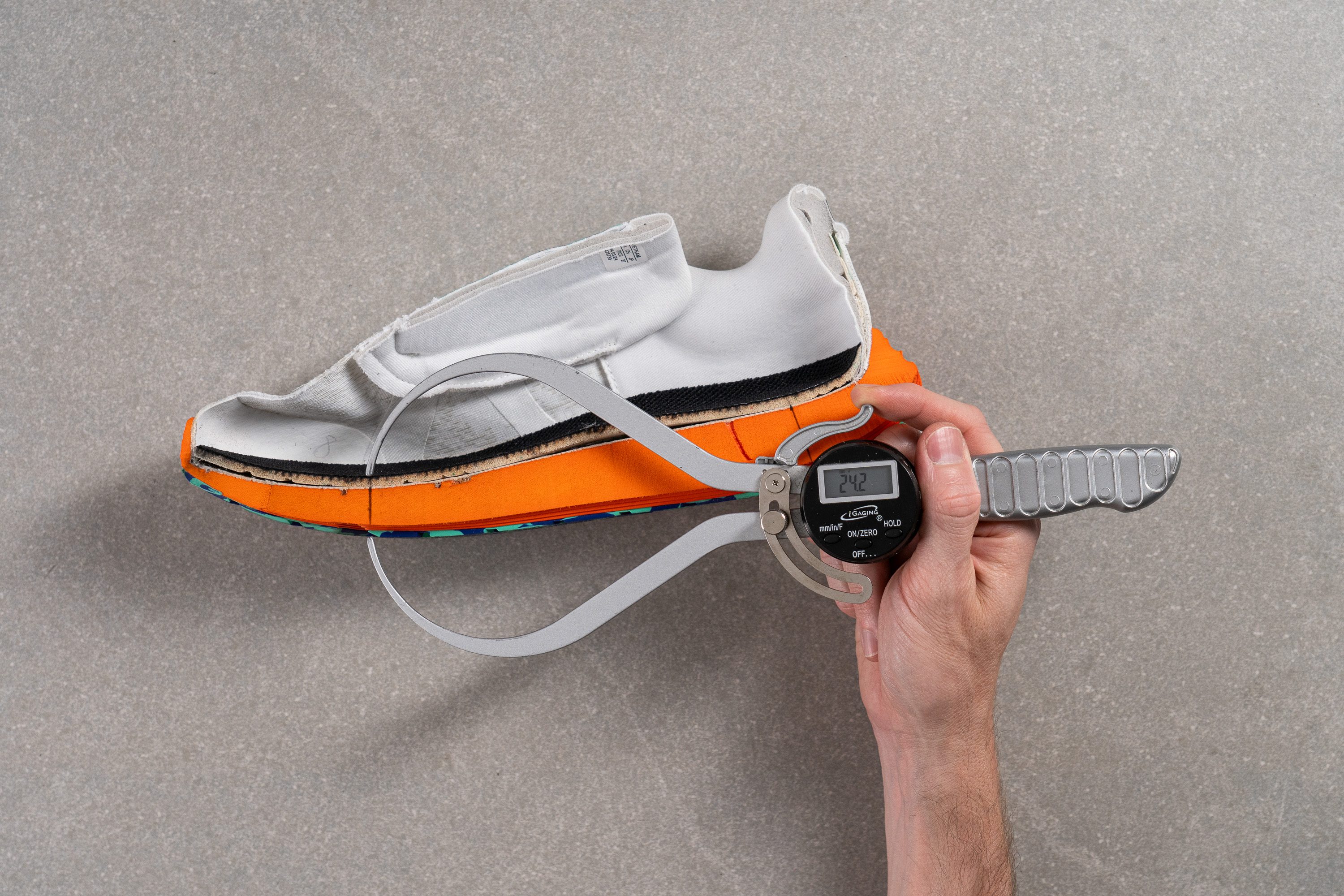
| Aero Glide 2 | 24.2 mm |
| Average | 26.2 mm |
Drop
Salomon says there's a 10-mm drop here, but we measured an 11.3-mm offset—a slight deviation that keeps the high-drop, wedge-like design anyway. Though primarily suited for heel strikers, the elevated offset can benefit anyone, especially those prone to issues with their calves and Achilles tendons.
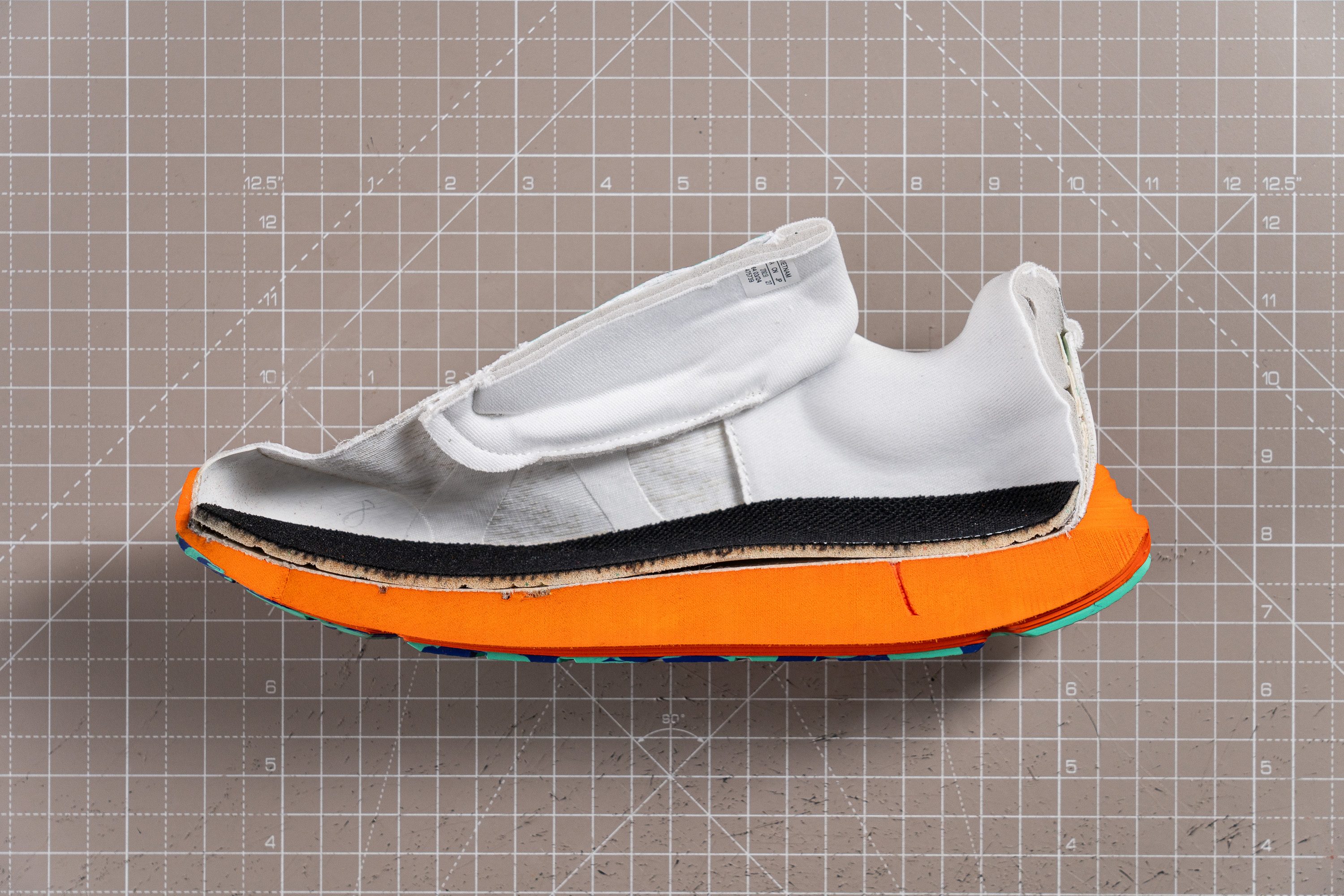
| Aero Glide 2 | 11.3 mm |
| Average | 8.6 mm |
Midsole softness
The Aero Glide 2's midsole, made entirely from Salomon's Energy Foam—an EVA-based mix enhanced with olefin for added resilience—mirrors On Running's Helion with its formulation and feels very similar underfoot, minus the signature clouds, of course.
This midsole offers a balanced, stable feel, ideal for those who favor security without the plushness. It also maintains the foot well-secured and prevents bottoming out in the forefoot, which is key due to the reduced cushioning in this area.
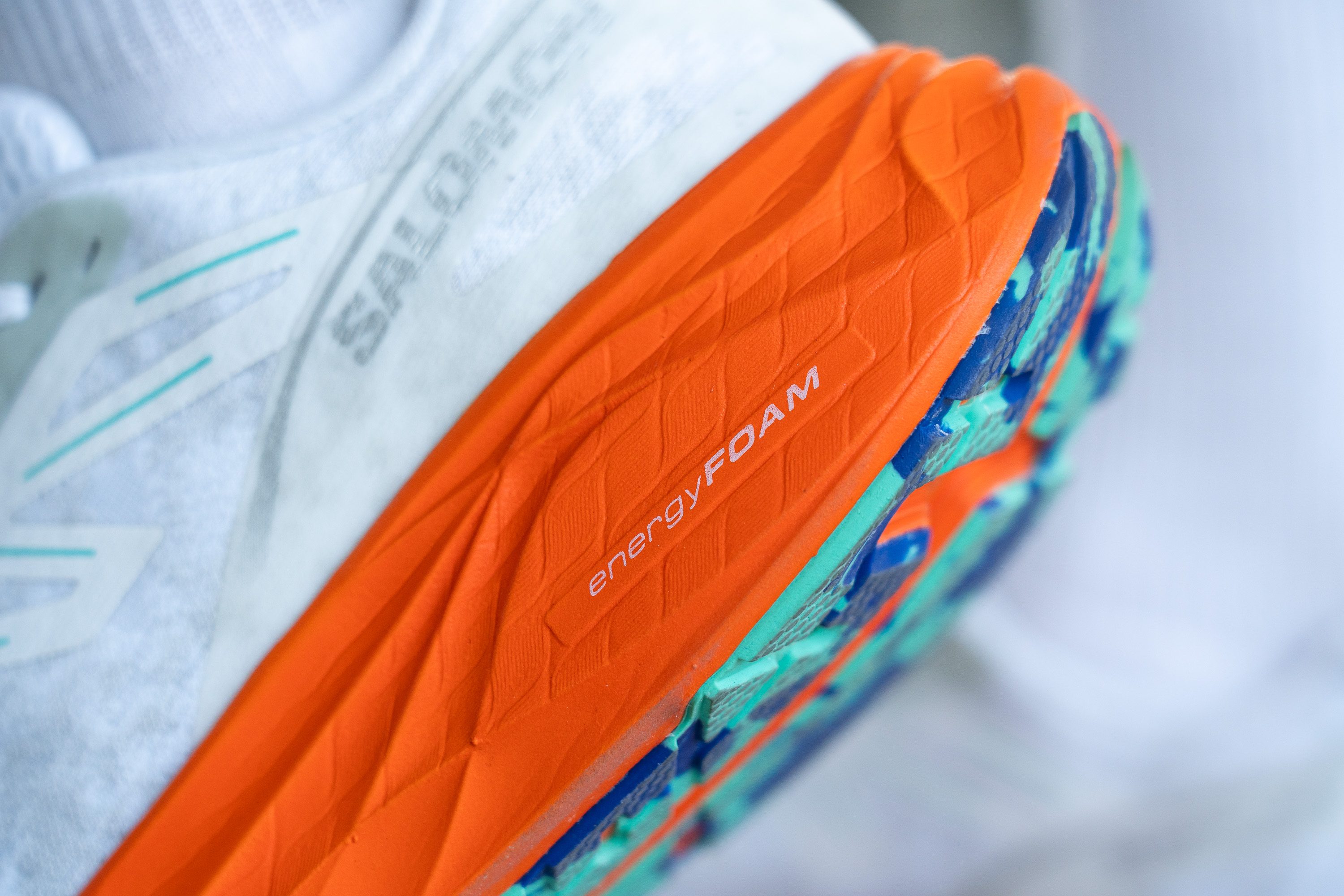
Energy return in this model remains consistent with its predecessor and typical daily trainers—decent but not as awesome like the Pebax-based midsole of the Nike Invincible 3. However, while not a standout feature, it's far from being a drawback.

| Aero Glide 2 | 22.5 HA |
| Average | 20.4 HA |
Rocker
The Aero Glide 2 boasts Salomon's "Reverse Camber," a term they use to describe a ski-inspired rocker that initiates in the midfoot with a moderate toe spring—something we've seen in numerous other shoes. Given the shoe's substantial heel-to-toe drop and average cushioning, a more aggressive toe spring isn't necessary.
But hey Salomon, we also think that there's really no need to assign fancy names to a standard feature of a shoe!
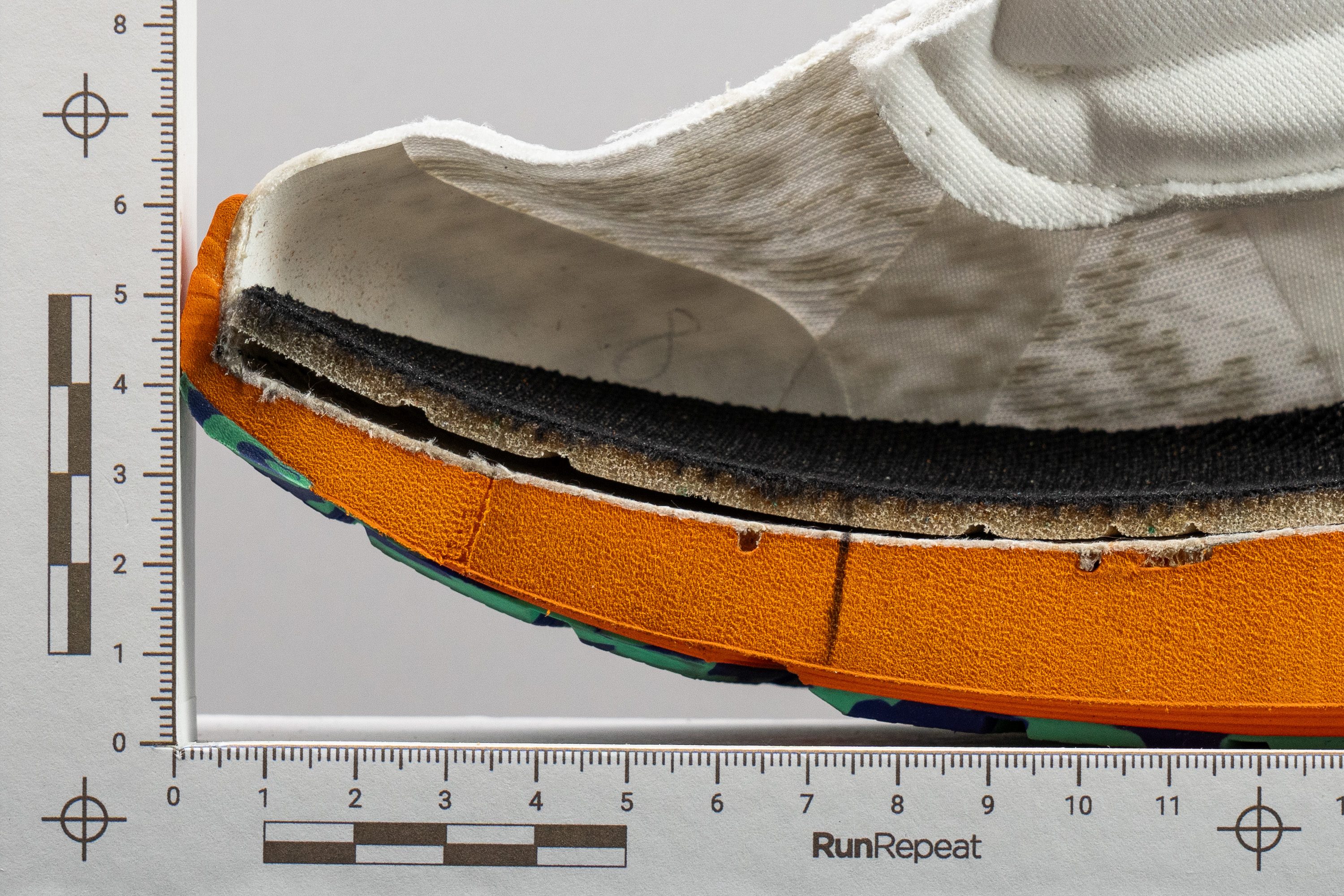
Size and fit
Size
Salomon Aero Glide 2 fits true to size (24 votes).
Width / Fit
We've noticed a trend towards more generous toebox designs lately, and the Aero Glide 2 perfectly embodies this shift, offering a widened 99.8 mm across its widest upper section—an uptick from the earlier 98.5 mm of v1.
Additionally, our evaluations revealed a subtle yet significant boost in toebox height, enhancing comfort for those with larger feet. This broader design is crucial since the shoe is available only in standard width.
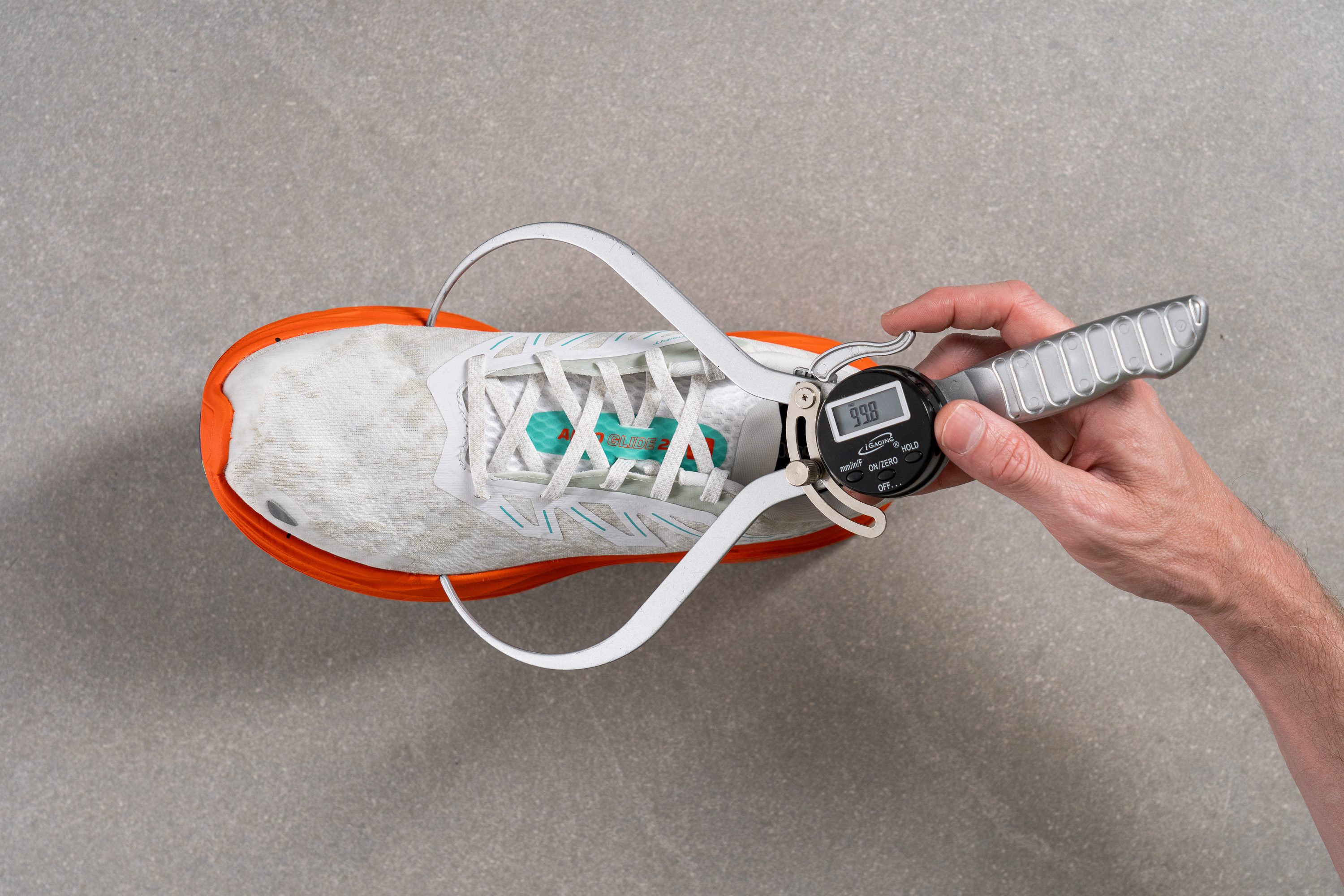
This test follows an older methodology, which is why you don't see recently tested shoes in the chart. Results from different methodologies can not be compared.
| Aero Glide 2 | 99.8 mm |
| Average | 98.5 mm |
Toebox width
However, we found that the upper tapers excessively—narrowing down to a snug 76.4mm in the big toe area. This could be a deal-breaker for those with really wide feet.
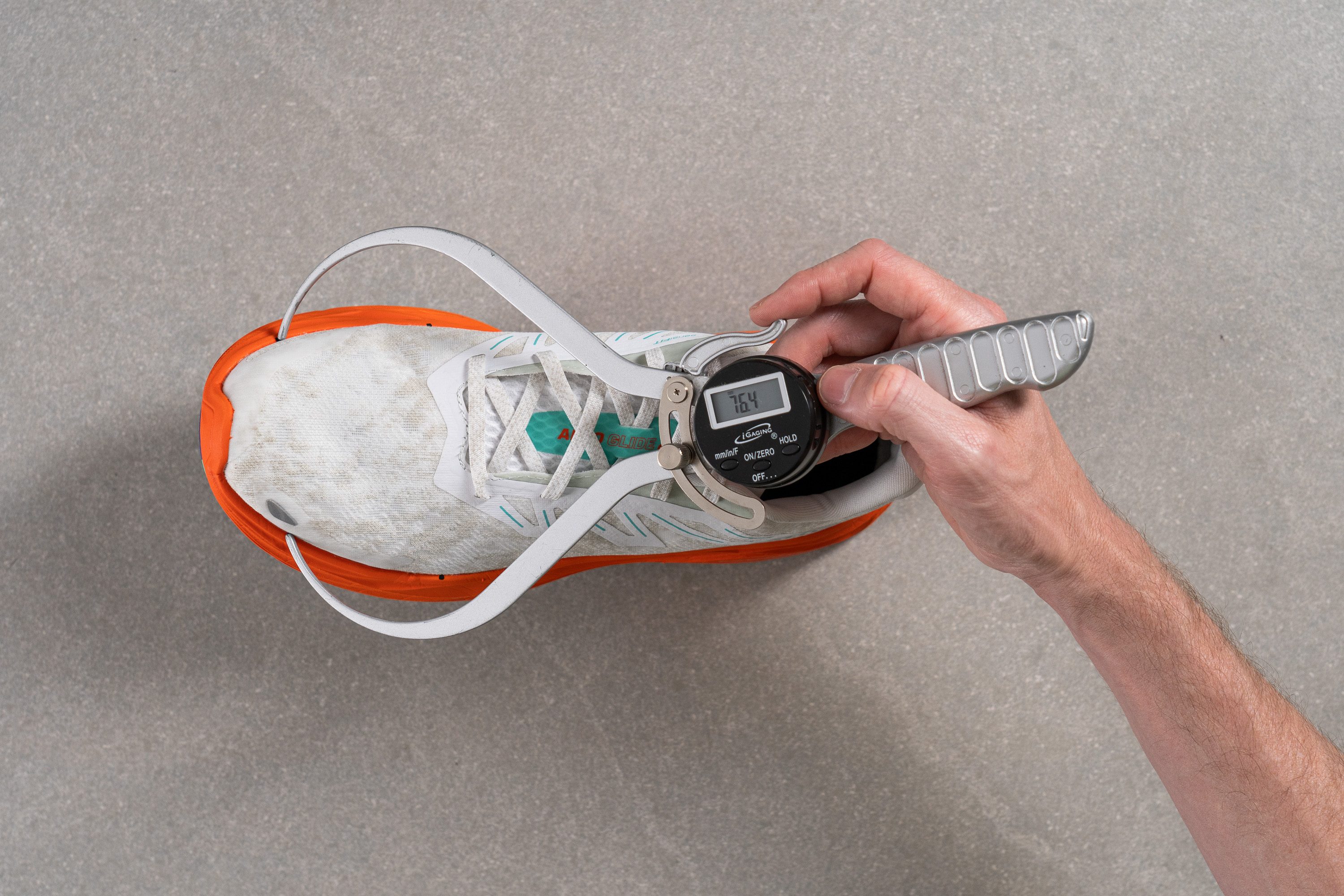
This test follows an older methodology, which is why you don't see recently tested shoes in the chart. Results from different methodologies can not be compared.
| Aero Glide 2 | 76.4 mm |
| Average | 78.4 mm |
Traction / Grip
Traction test
We tested the Aero Glide 2 and felt consistently stable even on rainy pavement—a result that didn’t surprise us given Salomon’s trail-rooted outsole expertise. The CONTAGRIP compound delivered a reliable 0.47 in our lab, showing that this road-ready shoe grips well on dry and wet surfaces alike.
| Aero Glide 2 | 0.47 |
| Average | 0.48 |
Outsole design
We also found that the outsole coverage stands out among daily trainers, featuring a significant design shift from the norm with a large central groove and horizontal cutouts in the heel and forefoot.
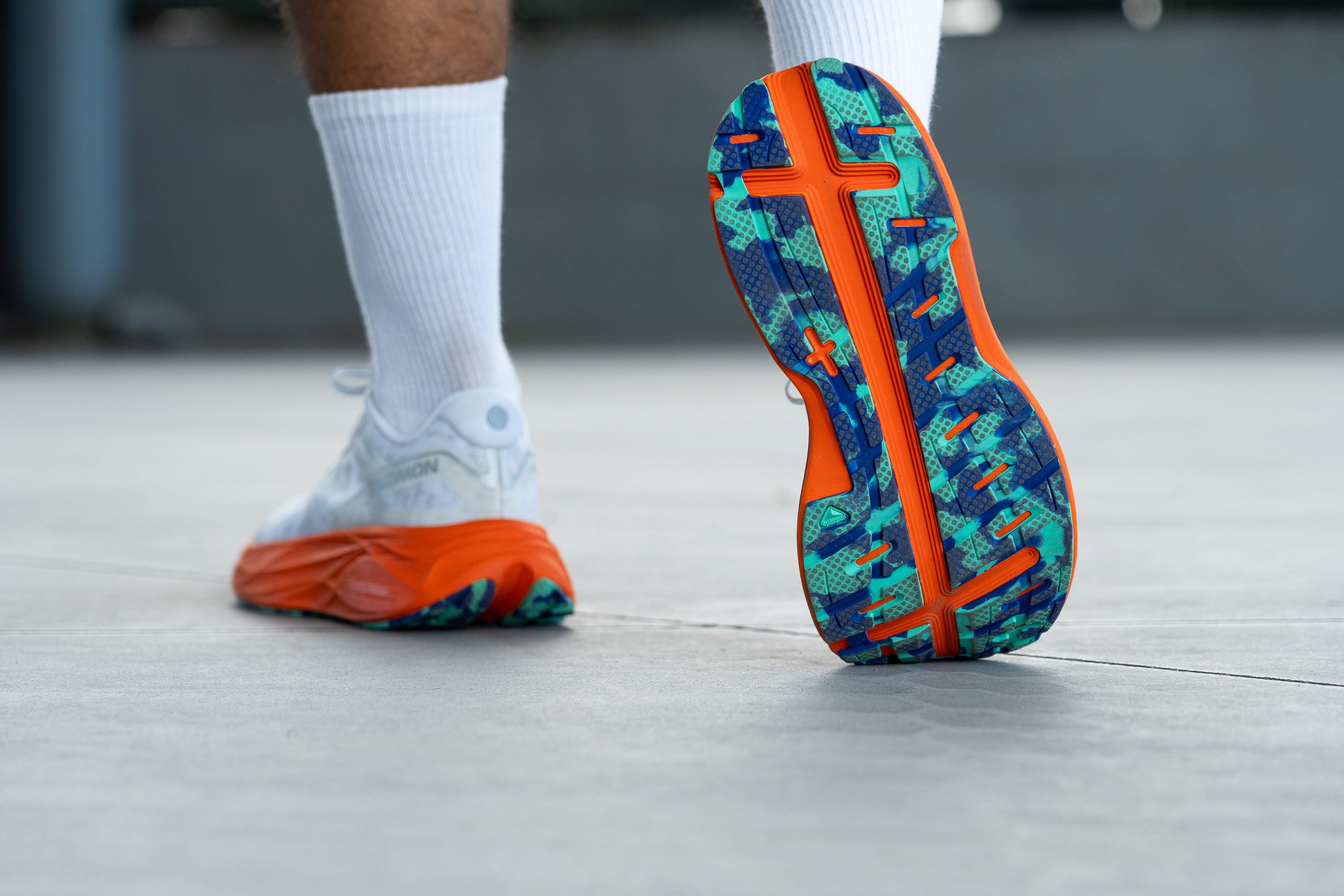
Flexibility / Stiffness
The shoe's high torsional rigidity doesn't extend to its longitudinal stiffness, thankfully making it more comfortable for easy runs, jogging, and walking.
Using our signature 30-degree bend test, our machine pushed up to 16.9N, which aligns well with modern daily trainers.
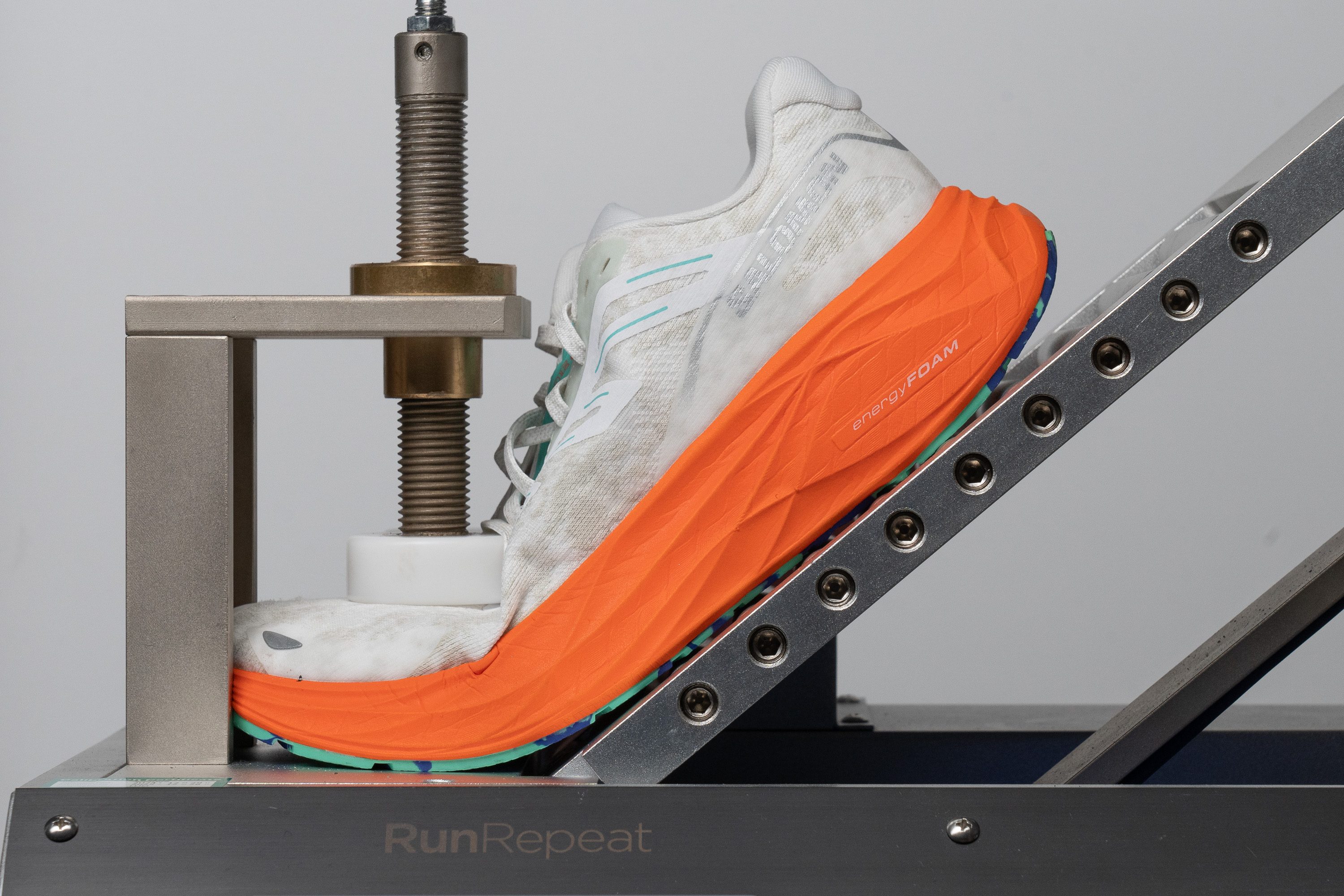
| Aero Glide 2 | 16.9N |
| Average | 15.3N |
Stiffness in cold (%)
After conducting another round of testing in our freezer, the outcome was impressive—showing only a 26.7% increase in stiffness. This result represents another successful validation of the EVA+OBC mix that Salomon utilizes in the Energy Foam midsole.
| Aero Glide 2 | 27% |
| Average | 33% |
Weight
Weighing in at 9.5 oz or 268g, the Aero Glide 2 maintains its predecessor’s weight—which we see as great news, especially because the redesigned upper enhances comfort significantly, and this update boasts an increased amount of rubber covering the midsole.
In terms of weight, we think the shoe maintains an excellent balance when compared to other cushioned daily trainers. Although it isn't as feather-light as some competitors, such as the Hoka Mach 6, it comfortably stays under the 10-oz threshold. Good job, Salomon!
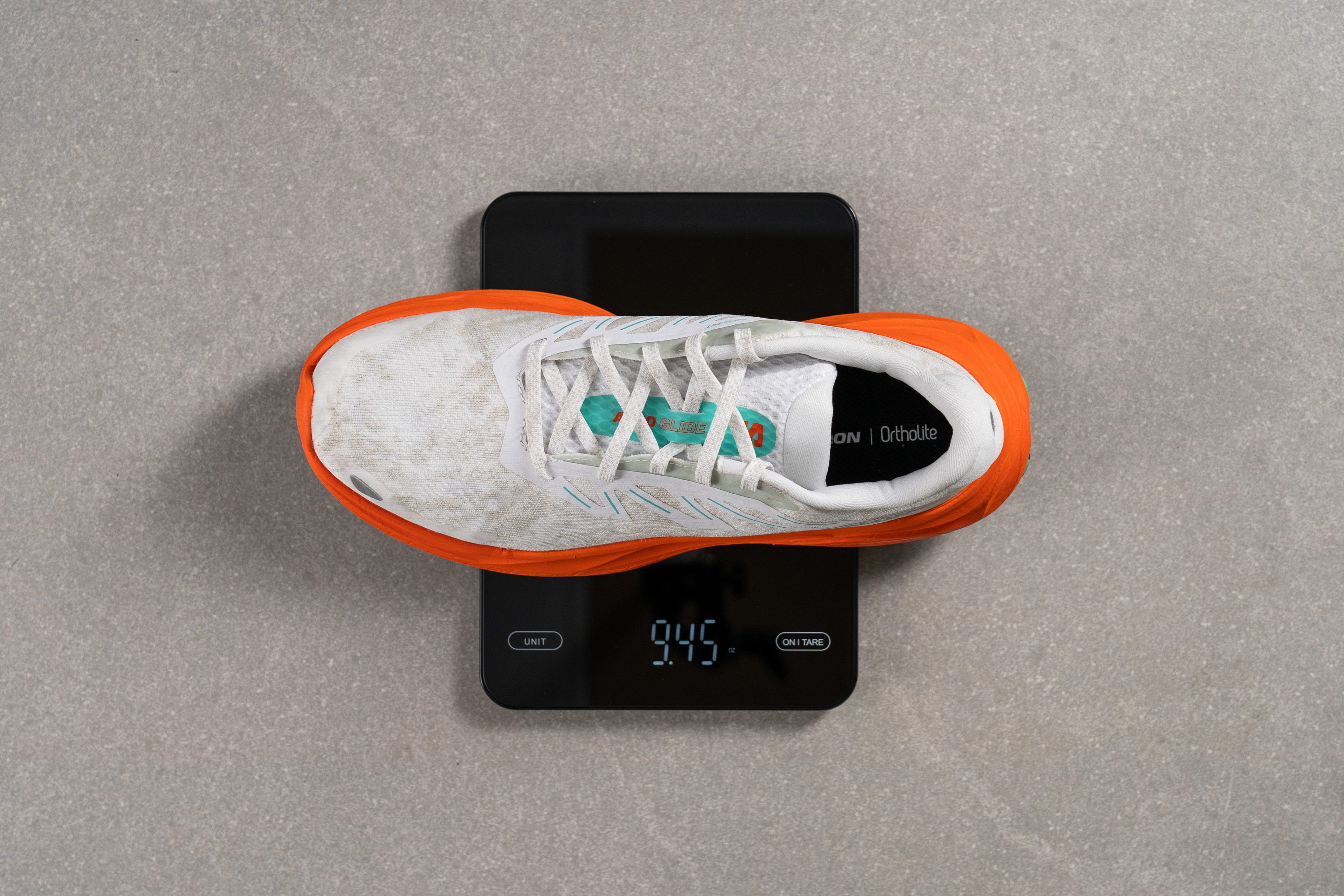
| Aero Glide 2 | 9.5 oz (268g) |
| Average | 9.3 oz (264g) |
Breathability
We thoroughly examined the Aero Glide 2's upper and found it exceptionally plush and welcoming, yet initial doubts about its breathability were present due to a lack of visible ventilation holes.
To accurately gauge the shoe's breathability, we hooked up a custom 3D-printed piece to our smoke machine. The results were revealing and positive—awarding the Aero Glide 2 an impressive 4 out of 5 for ventilation. This test confirmed that the shoe handles heat evacuation more efficiently than initially suspected!
Rather than employing multiple ventilation holes, Salomon opts for a high-quality, variable-density, paper-thin engineered mesh. This design choice effectively allows air to escape from critical areas like the toebox and medial sides, ensuring breathability without compromising the shoe's structure.
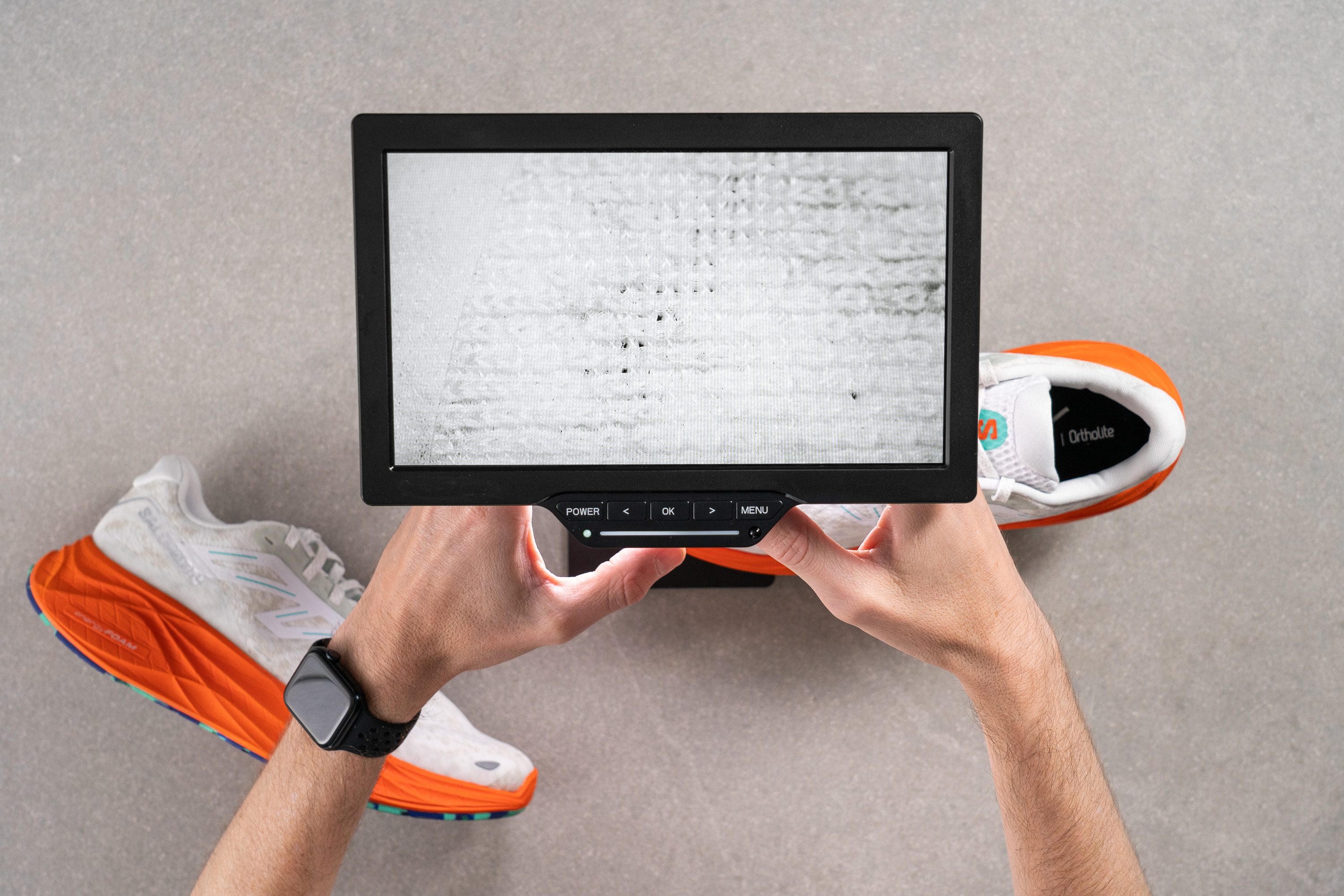
Upon closer inspection under the microscope, we noticed much better Salomon’s approach. Contrary to many brands, they placed the structural layer on the exterior with a softer fabric on the interior, likely aimed at boosting comfort.
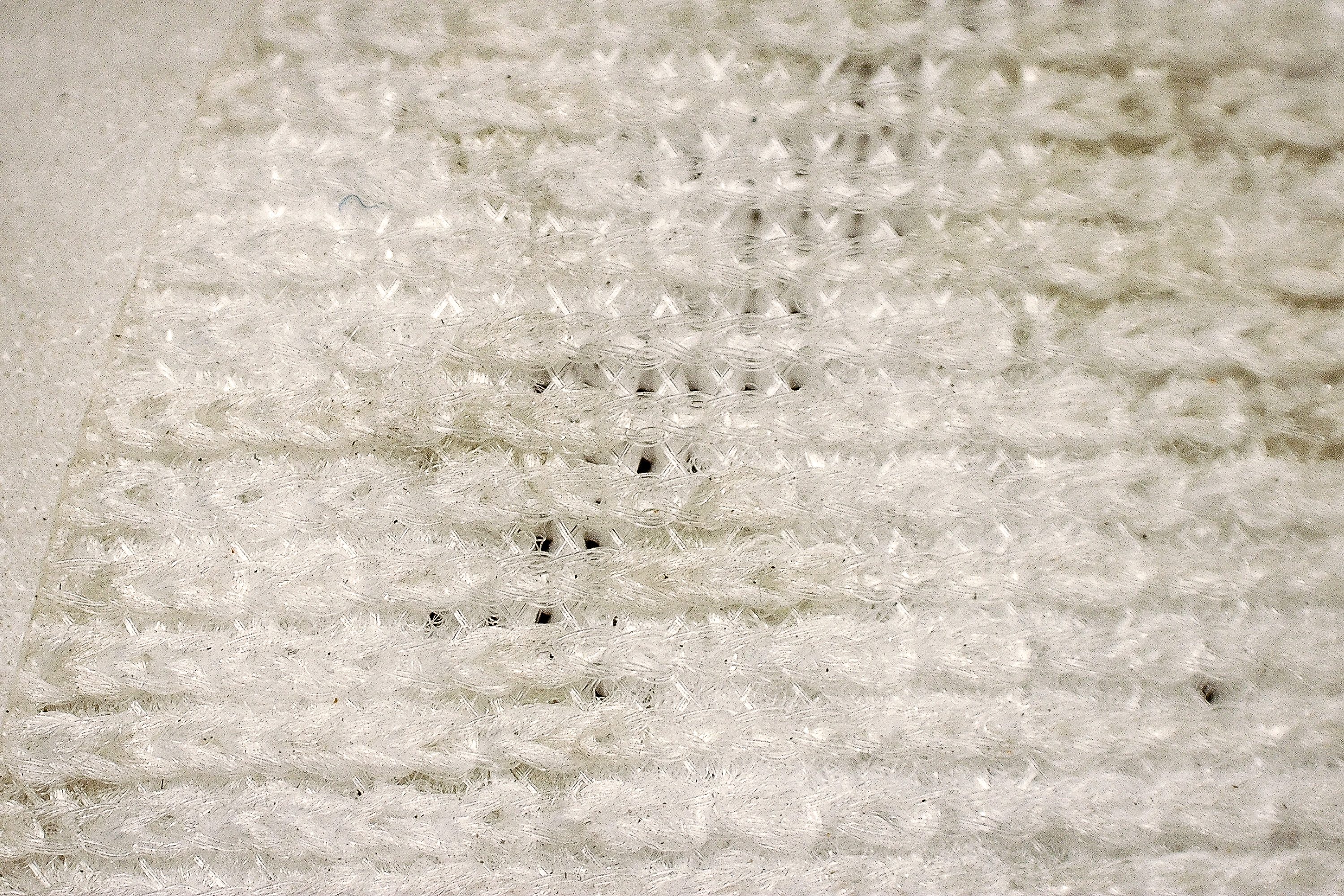
Overall, we really think the 3D Mesh upper of the Aero Glide 2 is superb. It strategically avoids potentially irritating seams and provides padding precisely where needed like in the heel, all while maintaining a remarkably low weight.
| Aero Glide 2 | 4 |
| Average | 3.7 |
Stability
Lateral stability test
Stability-wise, this is a neutral shoe offers excellent support through several design enhancements—elevated midsole sidewalls, a substantial heel bevel, and a prominent longitudinal groove—all contributing to a more centered gait during runs.
Torsional rigidity
The trade-off with the Aero Glide 2, however, is a ride that differs markedly from the flexible daily trainers some runners favor—it's way more rigid, feeling akin to certain mild stability trainers like the Hoka Arahi 7.
We rated it at an iron-like 5/5 in this manual assessment.
| Aero Glide 2 | 5 |
| Average | 3.5 |
Heel counter stiffness
Salomon moves back the Aero Glide 2 towards the daily trainer spectrum by incorporating a heel counter akin to those seen in models like the On Cloudmonster 2, which has a mid-level stiffness rating of 3/5.
In our experience, this addition provides a good balance—offering enough support to stabilize the heel effectively without becoming overly rigid or causing discomfort. And this feature is crucial for a shoe designed to be friendly to the Achilles tendon.
| Aero Glide 2 | 3 |
| Average | 2.9 |
Midsole width - forefoot
With a width of 120.6 mm, the AG2 is notably wide—similar to stability shoes, which typically offer a supportive base.
This might be too much for runners with perfect neutral techniques, but those with minor pronation or supination will find it very helpful.

| Aero Glide 2 | 120.6 mm |
| Average | 114.4 mm |
Midsole width - heel
At its widest, the heel of the shoe measures 97.5 mm, echoing the forefoot's broad design. This gargantuan size is especially good for runners who strike with their heels first, confirming our view that Salomon targets those runners.
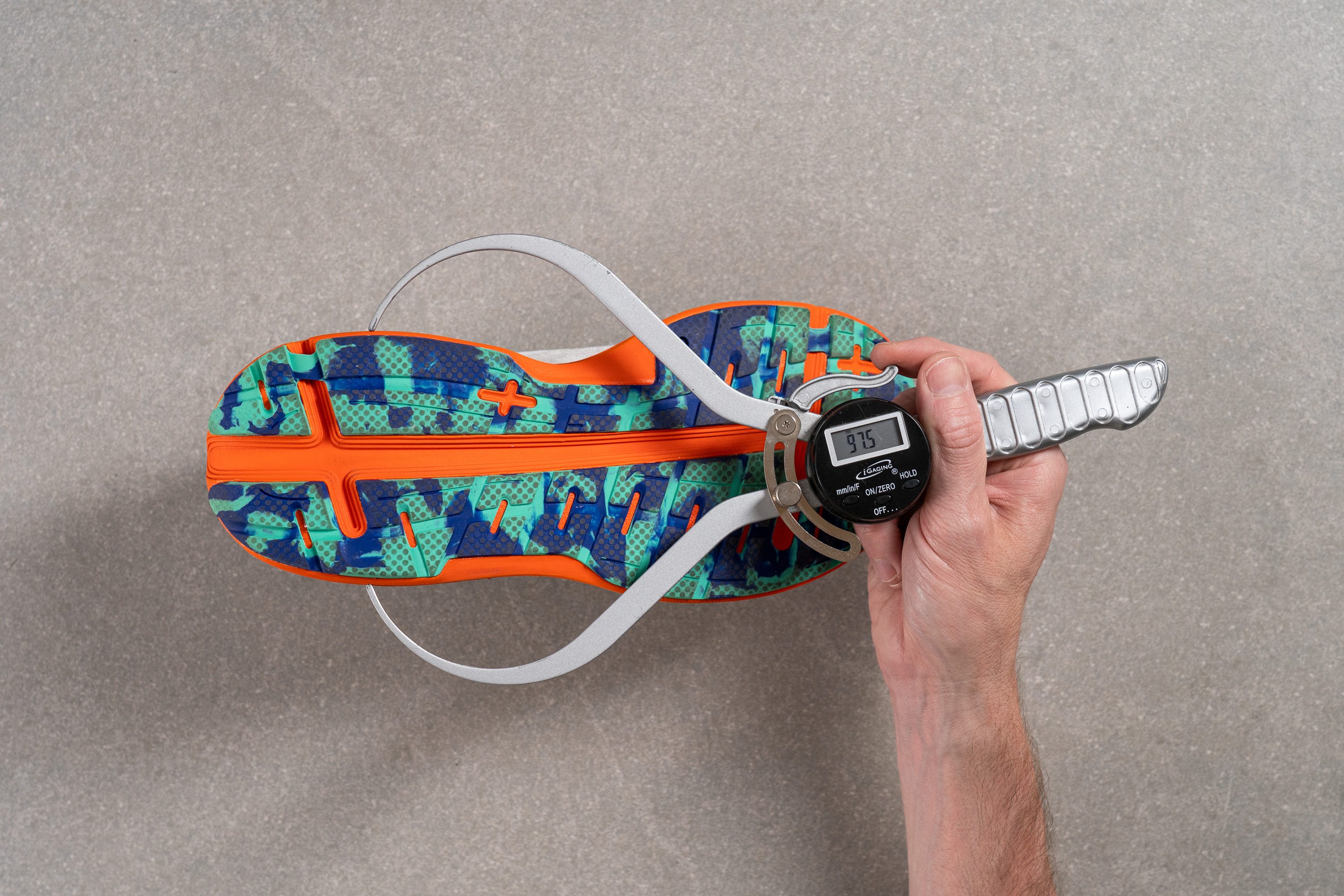
| Aero Glide 2 | 97.5 mm |
| Average | 90.7 mm |
Durability
Toebox durability
Employing an upper devoid of large ventilation holes naturally enhances durability—there are fewer weak points where damage might occur.
We discovered this firsthand with the Aero Glide 2, which earned a stellar 4/5 in our durability tests, a notable achievement for a road running shoe.
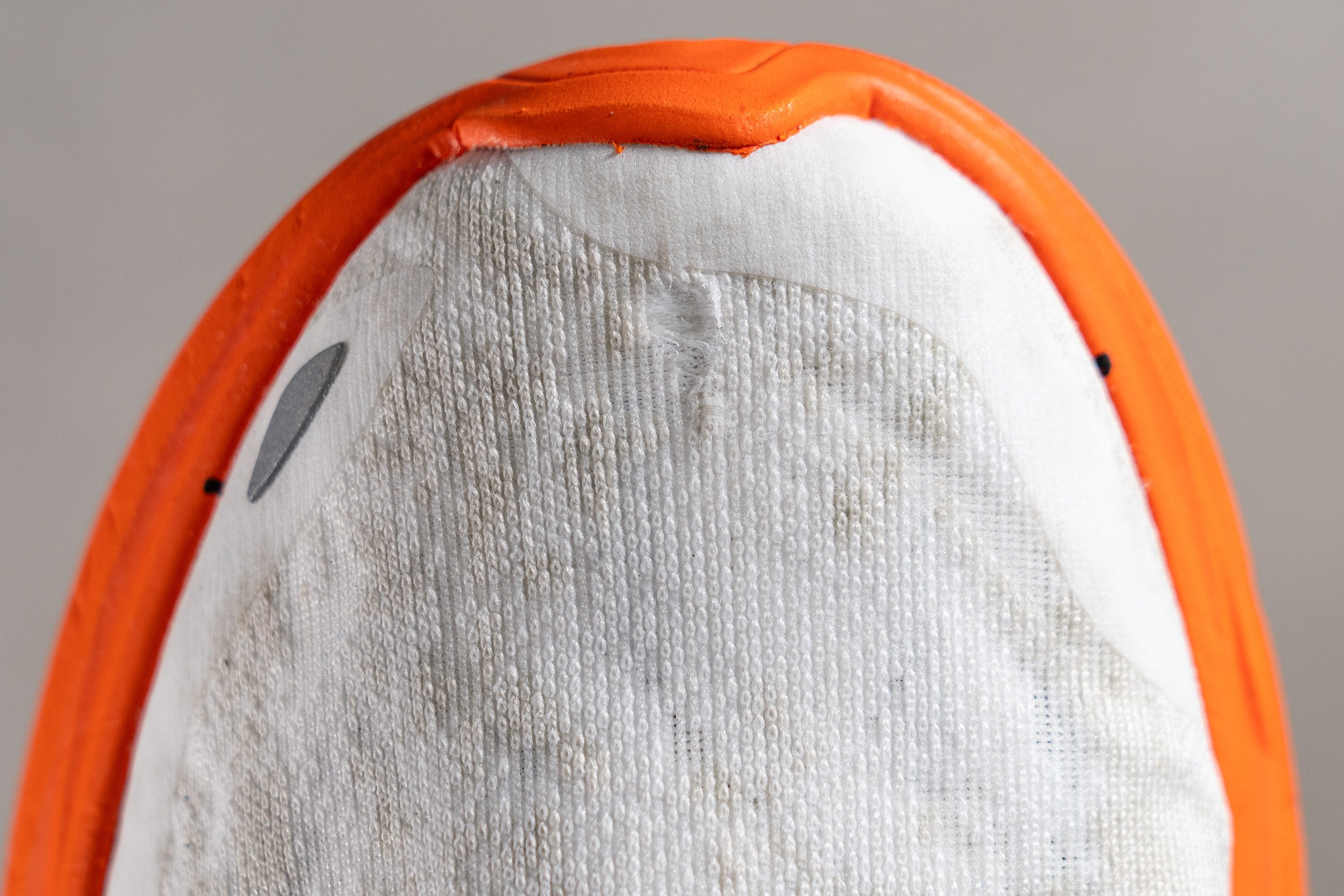
| Aero Glide 2 | 4 |
| Average | 2.6 |
Heel padding durability
We've found here in the lab that while the heel padding typically outperforms the toebox, it only garnered a score of 3 out of 5 this time.
Despite this score not being alarming, we had hoped for more resilience from a daily trainer in this section.
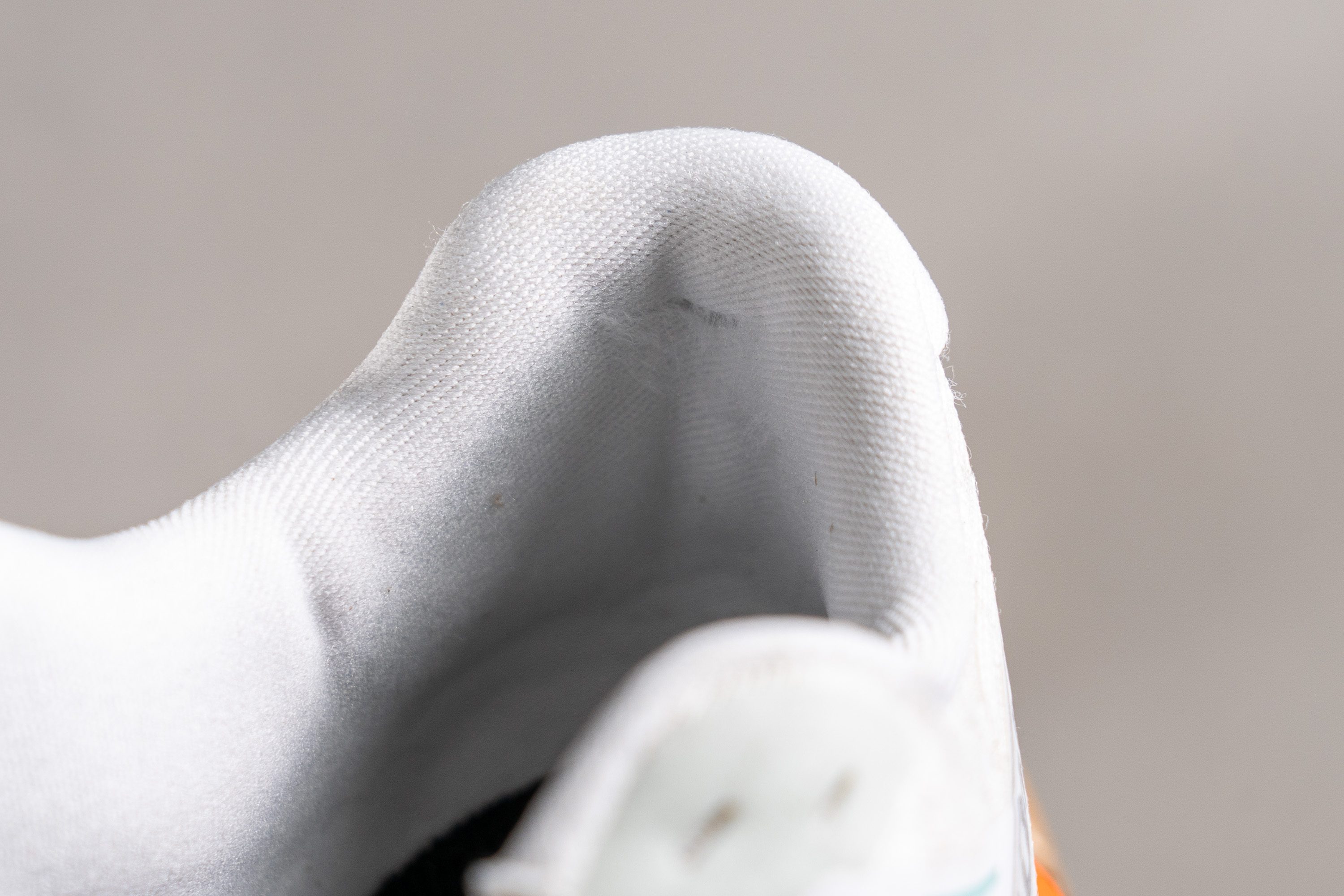
| Aero Glide 2 | 3 |
| Average | 3.4 |
Outsole durability
Eager to assess the durability of the CONTAGRIP rubber, we initiated our last Dremel test without delay.
The Aero Glide 2's outsole showed a moderate 1.1 mm indentation post-test—an average performance that, while not the top-tier of toughness, suggests a sturdy lifespan due to its full-length coverage and substantial thickness.

| Aero Glide 2 | 1.1 mm |
| Average | 1.1 mm |
Outsole thickness
Speaking about thickness—it's a crucial aspect of durability! At 3.4 mm, we believe Salomon's designers struck an excellent balance by using ample rubber to ensure a lifespan of at least 400 miles while not putting too much bulk.
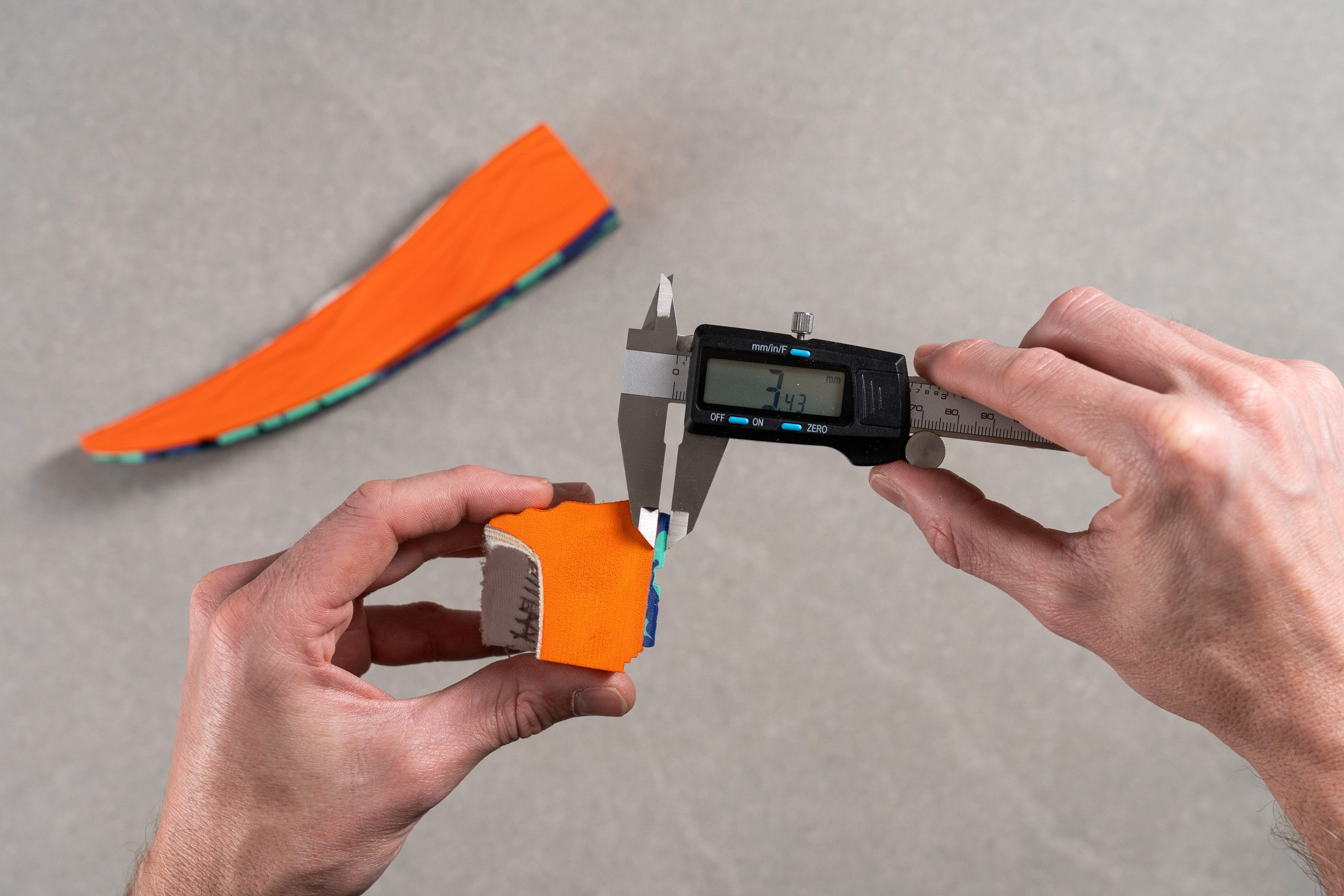
| Aero Glide 2 | 3.4 mm |
| Average | 3.2 mm |
Misc
Insole thickness
We measured the Ortholite insole of the Aero Glide 2 and found it to be 4.1 mm thick—comparable to most daily trainers, aside from Saucony models, which typically feature thicker sockliners.
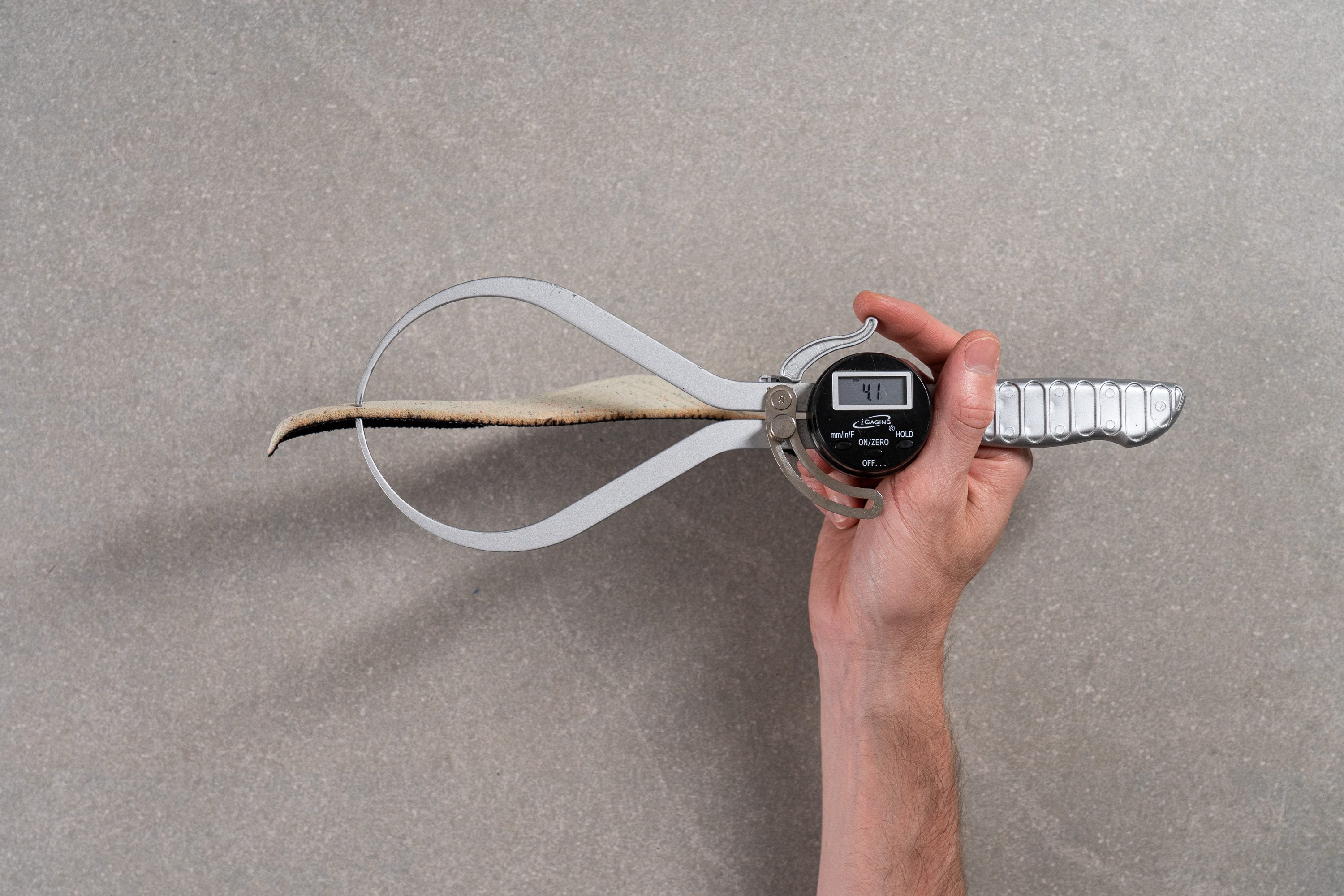
| Aero Glide 2 | 4.1 mm |
| Average | 4.5 mm |
Removable insole
We easily swapped out the insole for a third-party sockliner in the Salomon Aero Glide 2—its standard dimensions accommodated the change without any issues.
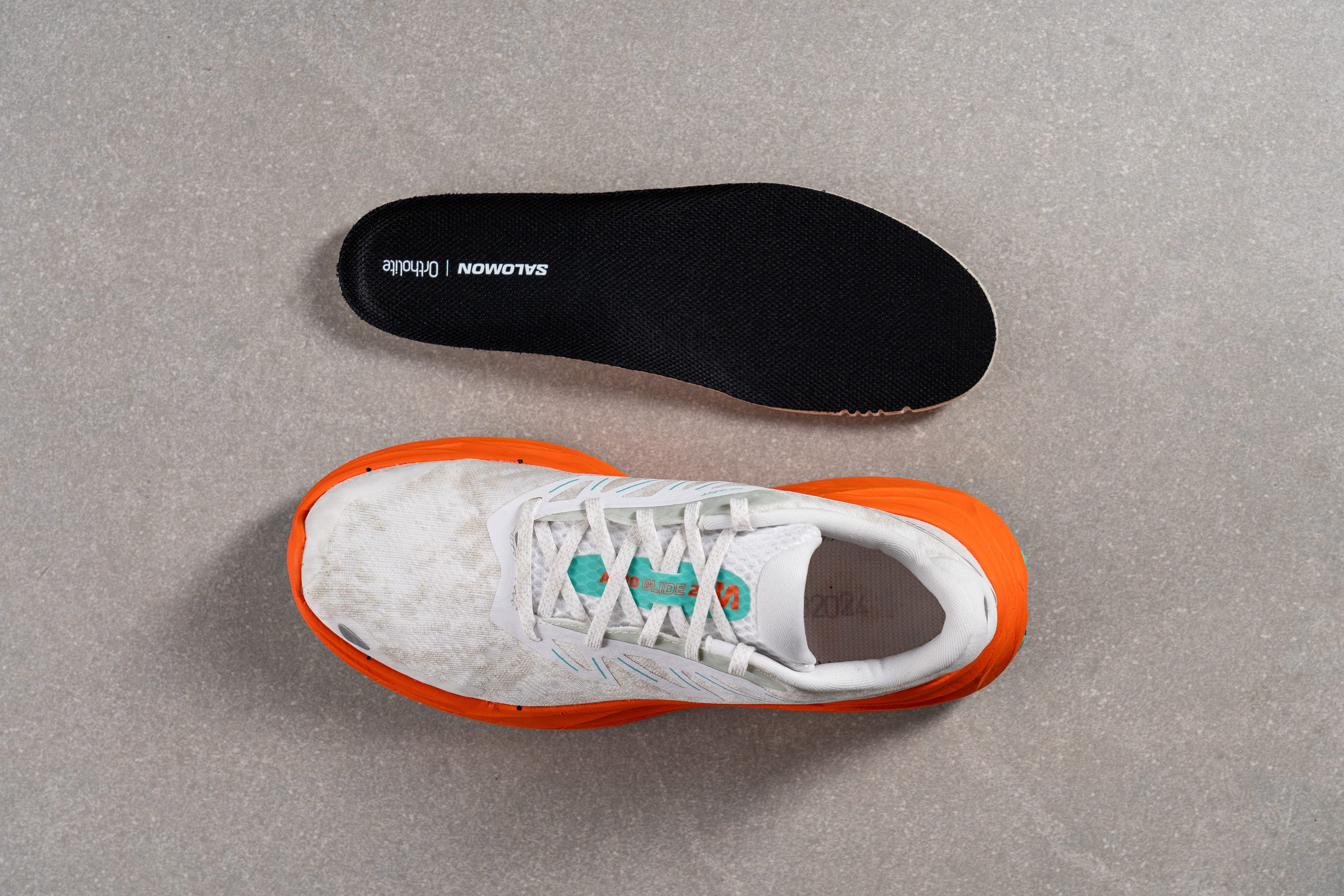
| Aero Glide 2 | Yes |
Midsole softness in cold (%)
In our cold-temperature evaluation, we noticed a minor 19.5% uptick.
This enhanced cold-weather capability stems from the blend of OBC (Olefin Block Copolymers) with the midsole's base EVA, outperforming regular EVA foams.
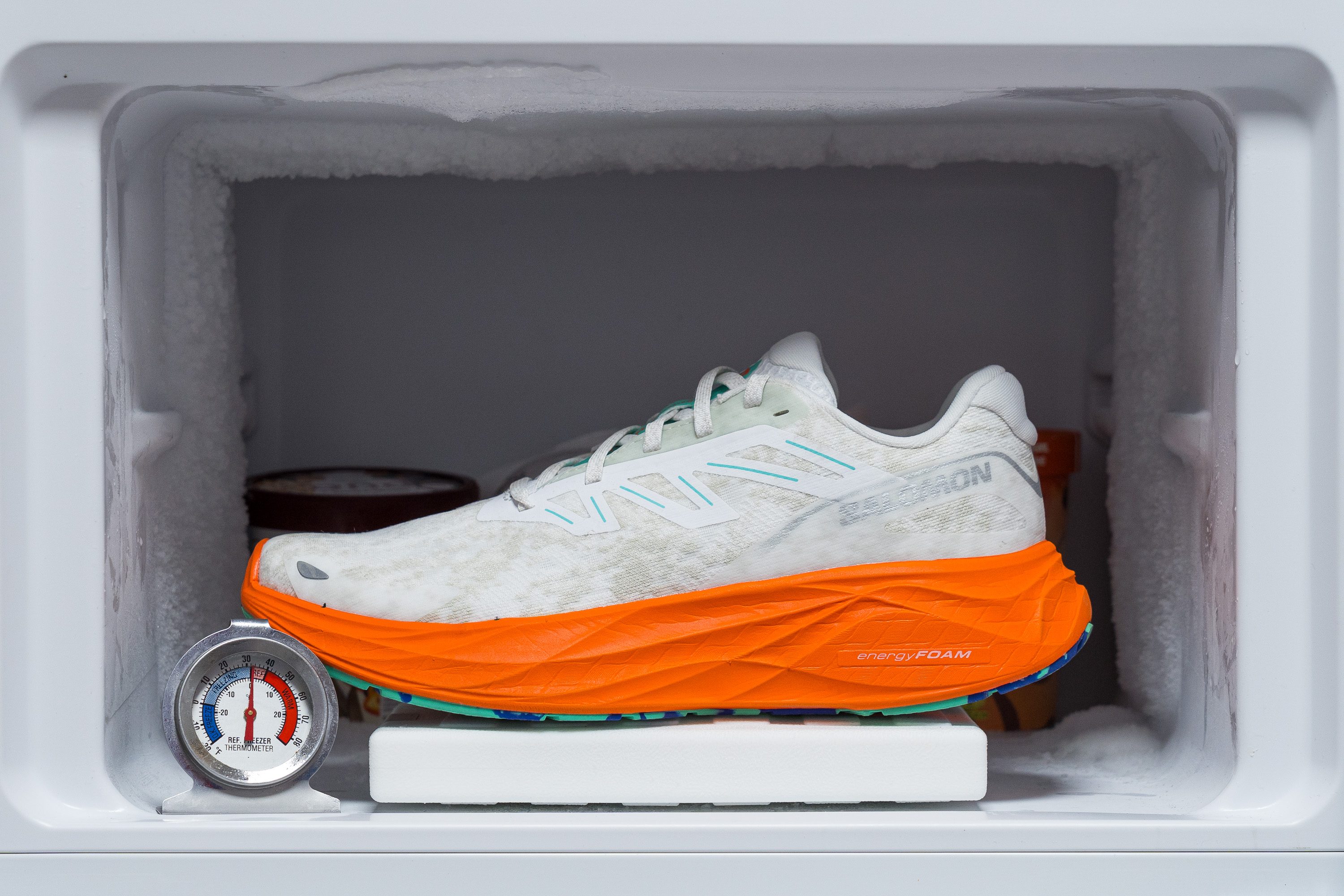
| Aero Glide 2 | 20% |
| Average | 24% |
Reflective elements
Salomon's journey from trail to road shoes might explain our surprise at the Aero Glide 2's exceptional reflectivity—something we didn't quite anticipate, especially because its predecessor had none.
We discovered strategically placed, high-visibility pieces along the heel and sides—achieving a rare 360-degree reflectivity that sets this model apart from many other competitors.
| Aero Glide 2 | Yes |
Tongue padding
We were thrilled to discover that, despite the tongue not being attached to the sides, Salomon made a notable improvement in this test. We found the tongue comfortably plush yet not overly thick at 7.9 mm, which is ideal for those marathon-training long runs.
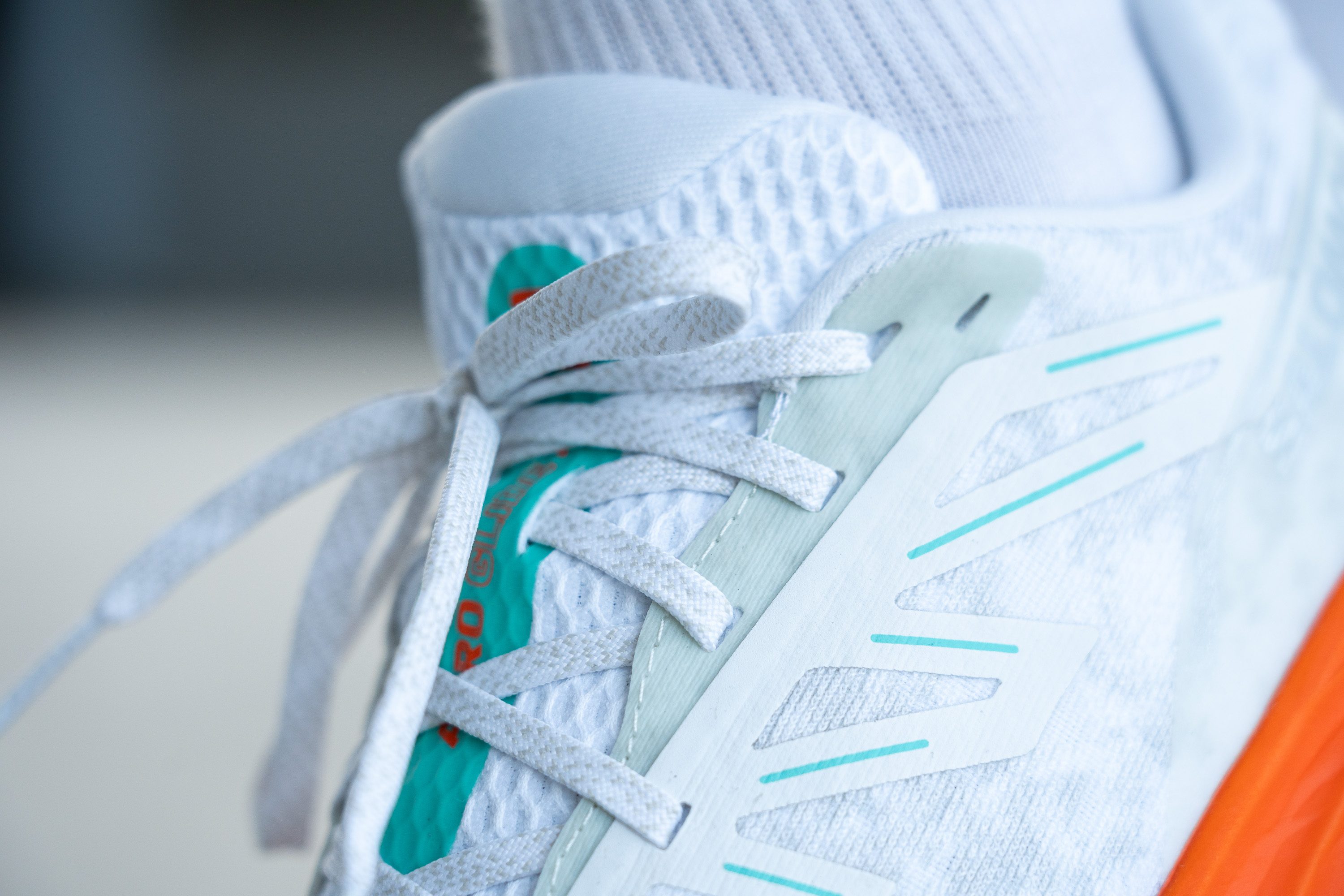
Additionally, we were impressed by the lacing system, which has rectangular eyelets that perfectly accommodate the flat laces. That's how it should be done!

| Aero Glide 2 | 7.9 mm |
| Average | 5.8 mm |
Tongue: gusset type
A major disappointment with the Aero Glide 2 is its non-gusseted tongue—a hard-to-ignore flaw in a shoe priced at $160. While the tongue loop offers a partial fix, we strongly believe the next version should feature a properly gusseted tongue to justify its high cost.

| Aero Glide 2 | None |
Price
The Aero Glide 2 maintains its pricing, a welcome stability in an era where many brands are nudging up their prices. We also think that priced below high-end models like the Saucony Triumph 22, it offers a sweet spot for runners seeking a value-oriented yet somewhat premium running experience.
| Aero Glide 2 | $160 |
| Average | $152 |
Heel tab
The Salomon Aero Glide 2 and noticed its heel area, like its predecessor, lacks a finger loop tab—often a handy feature for slipping the shoe on with ease. While this isn't a major issue and we appreciated the extra cushioning in this area, a tab would be very welcome for version 3.
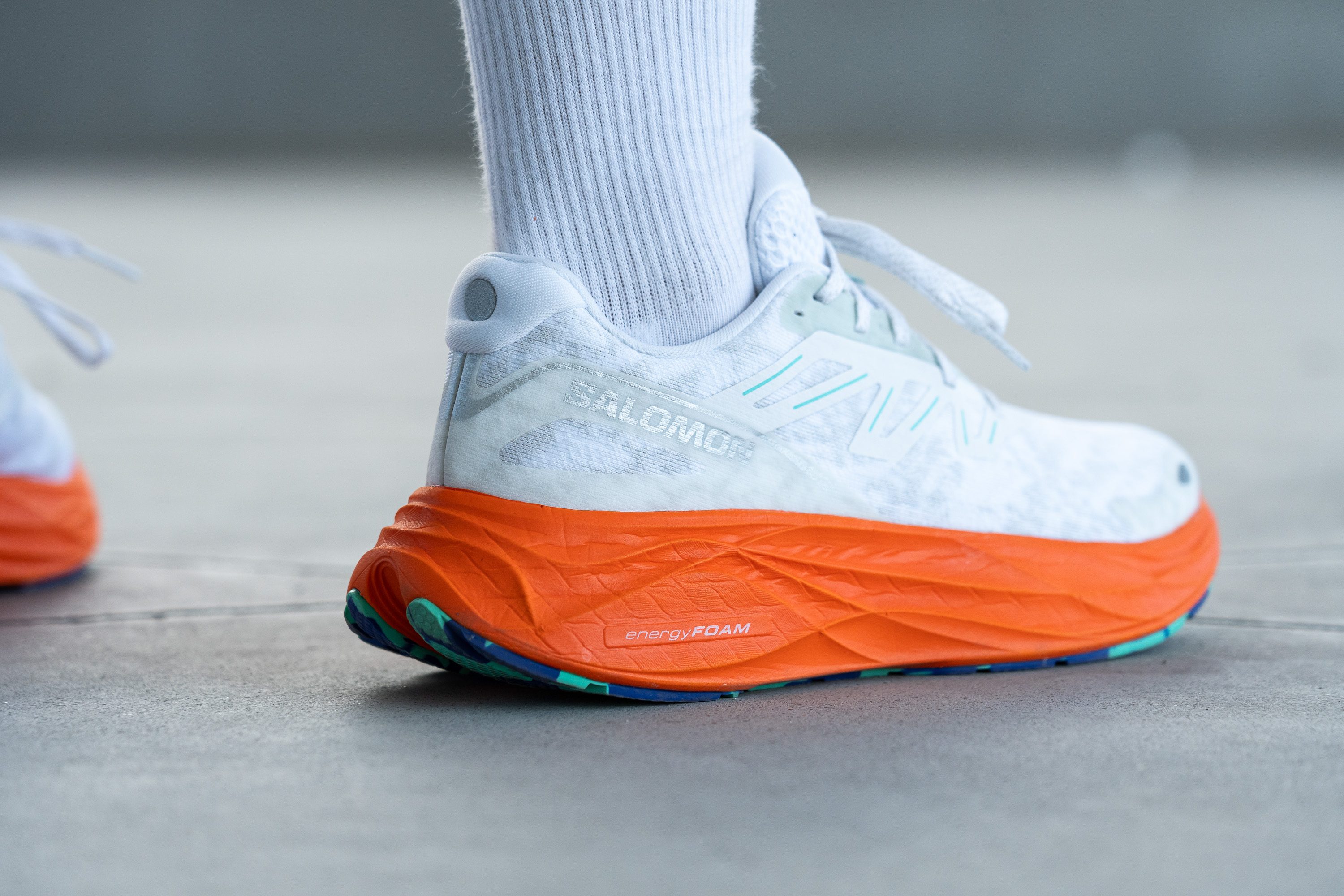
| Aero Glide 2 | None |

